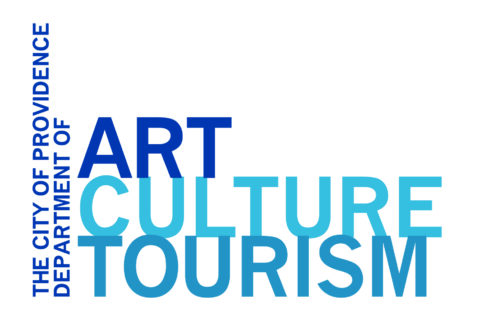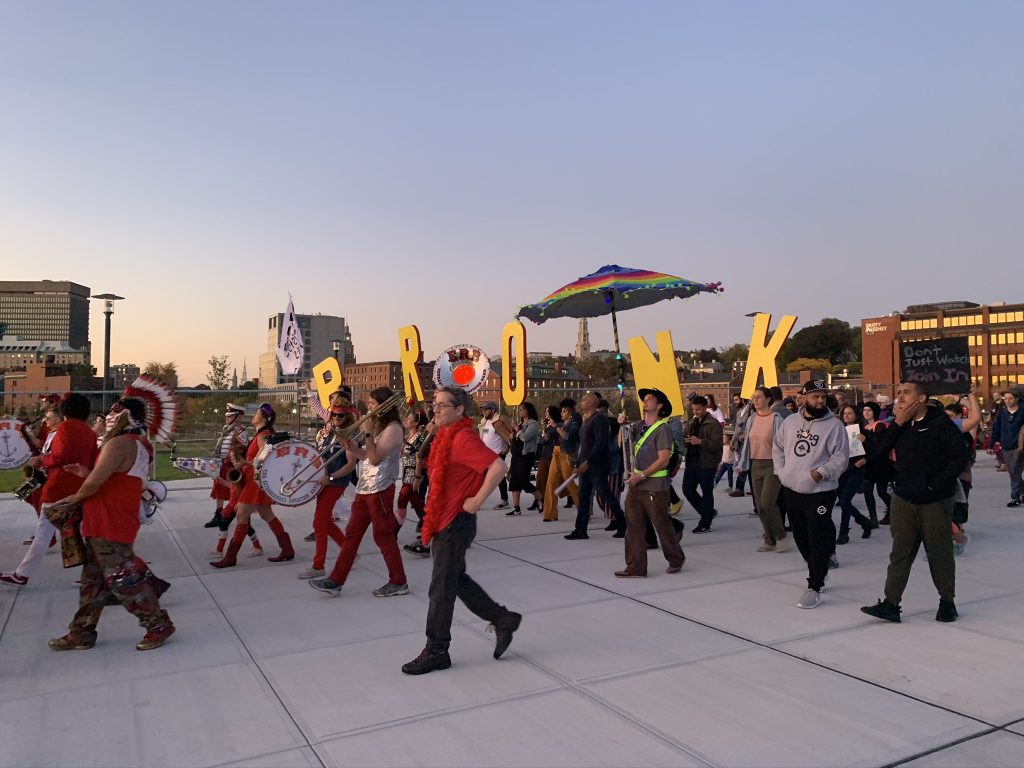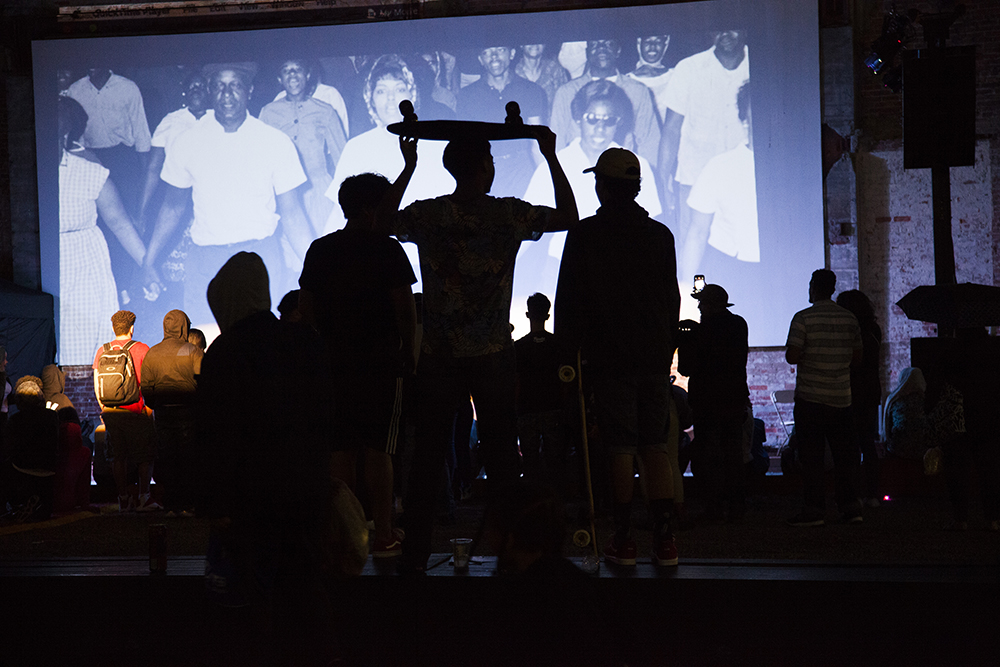PVDx2031: A CULTURAL PLAN FOR CULTURE SHIFT
Prepared by the City of Providence Department of Art, Culture + Tourism
With Tracy Jonsson-Laboy, Shey ‘Rí Acu’ Rivera Ríos, MJ Robinson, AS220, Grantmakers Council of Rhode Island, Rhode Island Black Storytellers, Providence Cultural Equity Initiative, Providence Youth Arts Collaborative, The Steel Yard and Renée Elizabeth Neely, MLIS.
Contents
- Land Acknowledgement
- From the Mayor
- From the Director
- A Note from ACT Director; 2016-2022
- ACT Mission, Vision, Values
- Glossary of Terms
- Seven Themes of Our Cultural Plan for Culture Shift
- Planning and Facilitation
- Top 21 Strategies
- Art and Well-being
- Placekeeping in Neighborhoods
- Creative Workforce
- Creative Economy
- Resilient Nonprofits
- The Future of Arts Teaching and Learning
- Public Awareness, Advocacy and Tourism
- Conclusion
- Closing Statement
- Acknowledgements
The PVDx2031: A Cultural Plan for Culture Shift was funded by the City of Providence, Rhode Island State Council on the Arts, and the National Endowment for the Arts.
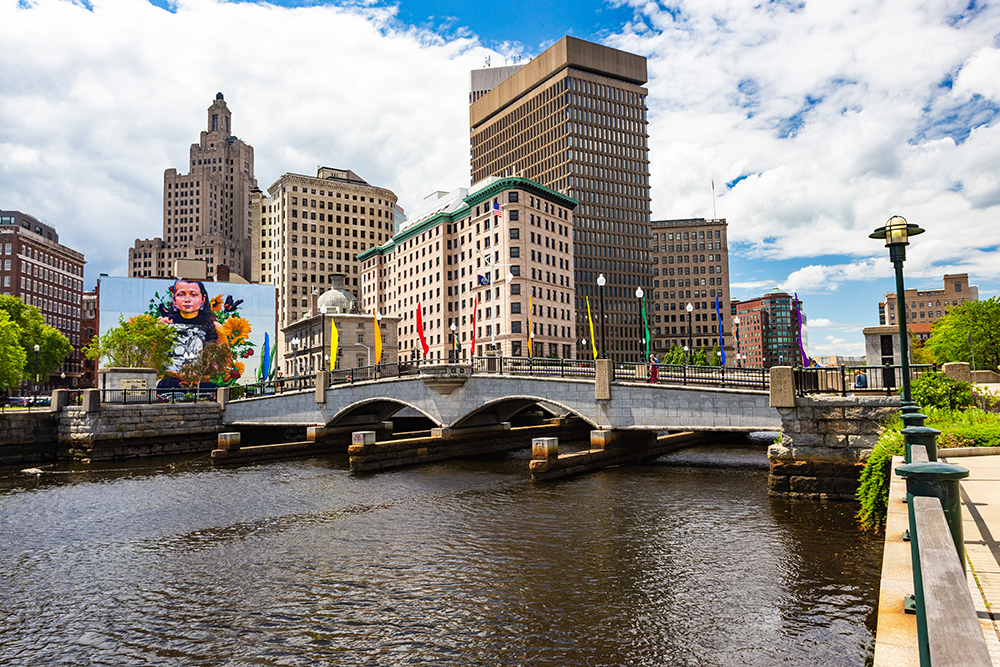
Land Acknowledgement
EXCERPT FROM THE LAND ACKNOWLEDGEMENT OFFERED AT THE CULTURAL PLAN LAUNCH IN AUGUST, 2020.
Today, a land acknowledgement has become something important. It is important because at one time all of Rhode Island was Narragansett land. All the United States was indigenous land. Often in these moments we are asked to acknowledge a specific small location. During these times people ask about the sacredness of the small and specific plots of land, for example, Providence. My answer to those questions is: land is sacred. Land has and is being stripped from indigenous people. These land acknowledgments are so that we do not forget that the indigenous people here in the United States face genocide, a genocide that was so strong, so powerful, that we have to remind ourselves to remember that this land did not always belong to the United States.
I find it funny, this concept of land acknowledgement, though, because my people did not believe in land ownership. When we speak about this land, that was the home to the Narragansetts, when we speak about this land that was the home to the indigenous people of this continent, we take it for granted. We can go to sleep without fear of our villages being burned to the ground, that we won’t be forcibly stripped from our houses and that our children will not be taken against our will. Yes, here in Rhode Island, our indigenous people face that too, not just out west. Here, in Rhode Island, Narragansett people were displaced to places as far as Wisconsin and Bermuda.
Roger Williams claimed he bought our land not with money but with love. How could he buy land from people who did not believe land could be bought?
I ask us not only to acknowledge but to remember. We are still here, against it all. We are surviving. Remember us? We remember.
Although we have been forced to assimilate, we remember the ways of our ancestors. We still live here, though often we are not seen. Our children still face oppression at their schools. We face job inequity and systematic racism. Yet, we move forward each day, taking another step. My people always talk about making a difference for the next seven generations. This means that long after we are on this earth, the impact we make is still having an effect. When we keep this mindset, it reminds us that all our actions can make a difference, negative or positive.
As we move forward with this meeting today, I want us to keep that idea in mind; making a difference for the next seven generations. Although this is just a ten-year plan, the repercussions of it will have a ripple effect. How can we be inclusive of all people? How can we be inclusive of the Narragansett people, the original people of this land, who are still here living on this land today? Many of them right here in Providence. How can we make a difference for the next seven generations to come?
I end with a song that I wrote that translates to “I wish you love, I wish you peace, I wish you happiness” in a way to kind of frame that mindset as we are moving forward.
Thank you so much.
Lynsea Montanari
From the Mayor: The arts are our city’s life force
I believe that the fundamental job of city government is to find ways to bring people together. If our work is a quilt, the common thread is a healthy and vibrant community. And I believe there are few better ways to bring people together than through the arts.
The arts are our City’s life force; they are what make Providence the “Creative Capital,” and I believe art should play a major role in Providence, now and always.
We don’t have to look further than the immediate and lasting effects of the COVID-19 pandemic to know our local arts community has been dramatically impacted. The cancellations of live shows and events has had a ripple effect on our neighbors and neighborhoods. Our local artists were hit hard; the majority of our creative workers and cultural producers lost access not only to their creative lifelines, but many also lost supplemental jobs in the hospitality industry. Organizations and creative companies lost ticket and donor revenue. Tourism shut down, and the path to recovery appeared bleak.
Moreover, the racial reckoning that took place during the summer of 2020 influenced how we come together in shared space, how we allocate resources and share power, and how we truly work towards a racially just world. We will not arrive at justice without centering our BIPOC creatives. City funding and support must be explicit about this, and it’s our local dollars, decisions, and economies that will make all the difference.
In these universally trying times, it can be difficult to see a pathway to justice, equity and happiness. As I mentioned, art is always a common thread; it always brings us together. But we need to be strategic and purposeful in how we implement art as a tool to reach our goals.
PVDx2031: A Cultural Plan for Culture Shift outlines how art and culture operate at the intersection of all the key issues of my administration: our comprehensive Climate Justice Plan; our Anti-Displacement Housing Strategy, our Matter of Truth Report; the development of BIPOC affinity group advisory roles; as well as examinations of the public safety budget; civic infrastructure projects; and investments and programming for our youngest residents. All of these policies and actions are hallmarks of the thriving and inclusive community that we strive to be.
This cultural plan expands our understanding of what it means to be the Creative Capital: calling for the incorporation of art at all tables, fostering creative public decision-making processes, and reimagining public space and civic life. And of course, it celebrates all of the ways art brings people together.
Thank you again for being a part of this process and for being a part of what makes Providence the Creative Capital. I am proud of the legacy work this plan promotes and look forward to raising my son in a City so vibrant and full of creative life.
Mayor Jorge O. Elorza
From the Director: A roadmap for our future, a call to action
Greetings, Providence artists, culture bearers, practitioners, educators, and advocates.
It is a great honor for me to present PVDx2031: A Cultural Plan for Culture Shift as one of the first major milestones of my tenure as Director of the City of Providence Department of Art, Culture + Tourism.
This plan is a community call to action.
Our Department developed PVDx2031 in collaboration with local artists and arts organizations throughout 2020, a year with unforeseen yet necessary sociopolitical pivots. Engaging a cultural planning process during COVID-19 pandemic shut downs and in the context of the Black Lives Matter movement was both challenging and fortuitous. We could not shy away from this place that made us; we could not think about climate change, nor its effects on the health and well-being of our communities, as separate threads. We also had to honor that cultural workers are uniquely capable of recognizing and addressing social damage in times of crisis, and of transforming our awareness into concrete strategies that will help foment healing, repair and resilience.
A team of Sector Alchemists, Artist Facilitators, a Steering Committee, and our City colleagues joined forces with us to listen, record and then write a plan that is as responsive as it is reflective. We worked to name strategic catalysts while acknowledging what is in our collective control, and what deserves to be advocated for. We are aware of the contradictions foregrounded in this document and know that, in our roles as avatars of City government, and residents and participants in Providence’s civic cultures, we too must live with contradiction. These contradictions have been a key factor driving us to forge partnerships within and across the creative sector.
The plan’s seven themes evolved over the course of two years of collaborative work to ensure that in the next ten years, ACT changes the way it addresses, appreciates, funds and invests in Providence’s creative workforce and economy. We invited you into our thinking and processes through planning studios, surveys, focus groups and interviews. You can learn more about our process on our blog: https://artculturetourism.com/pvdx2031/.
Like its predecessor, this cultural plan serves as a living blueprint for public policy, private initiative and strategic investments in our City’s creative life. We heard demands for living wages for artists; reinterpretations of the concept of resource distribution; and calls for local investment in our individual creative practitioners, artist collectives and organizations. With these calls, we saw distinctions between nonprofit and for-profit models flatten. We heard concern for the next generation’s access to opportunity, institutional power and material resources. We heard calls to invest in arts, culture and the humanities as a way to repair and heal individual and societal trauma and increase community well-being. We heard calls for racial justice; support for BIPOC leadership; and cultural expression and access. As such, racial equity is explicitly centered in this cultural plan.
I have long believed that bureaucratic work, when undertaken humanely, can advance equity. In PVDx2031: A Cultural Plan for Culture Shift, ACT advocates for a bottom-up, equitable approach. That is why this plan is as fluid and flexible as it is farreaching. Indeed, some of its goals may be speculative, but they are grounded in the concrete words and intentions of the many brilliant people who have helped make it real.
This is a dynamic roadmap for our future.
Can’t wait to see you on the journey.
Lizzie Araujo,
Director, City of Providence
Department of Art, Culture + Tourism
July 2022
A note from Stephanie Fortunato; ACT Director 2016-2022: Our Continuum
“…What we practice at the small scale sets the patterns for the whole system.”
-Adrienne Maree Brown, “Emergent Strategy: Shaping Change, Changing Worlds.”
Cultural planning instigates a process of bringing communities together to develop a shared vision for arts, culture and creativity. This begins with assessing local cultural resources in a way that recognizes and supports the rights of all cultures. Then, communities work together to respond, to articulate a strategic approach to the interdependent set of challenges and opportunities identified. A cultural plan outlines the comprehensive investments needed alongside an implementation plan. It is a living document that must adapt and respond to the circumstances of participants, place and time.
That’s more or less the answer I have given when asked about cultural plans so many times since I joined ACT in 2008 to manage the City’s first cultural planning process. Since I have spent most of my tenure with the Department overseeing the implementation of Creative Providence, I thought I had a pretty straightforward idea about what the cultural planning process and the collective plan that came out of it could do for communities. ACT had steadily and successfully advanced the first cultural plan by strategically turning action items into investments, policies, programs and partnerships that span cultures, neighborhood boundaries, artistic disciplines and generations. The first cultural plan quickly became a call to action; a useful tool for collaboration and a set of guiding principles for ACT.
Creative Providence served the city well. In 2018, we set out to update our cultural plan with an idea to work with the community over 2019 to release in 2020. The six original goal areas were still solid but the creative ecosystem had evolved and the strategy needed to as well. We needed to create a cultural equity framework for planning. We added a goal around art and well-being; assembled our project leadership team; and wrote a grant proposal to the National Endowment for the Arts based on logic models and projected timelines and budgets that seemed feasible and effective. We were feeling pretty good about our plans as we waited to hear about the grant award.
In Emergent Strategy, a book the Sector Alchemists, ACT staff and Artist Facilitators read together early on in the design of the planning process, Adrienne Maree Brown writes: “A fractal is a never-ending pattern. Fractals are infinitely complex patterns that are self-similar across different scales.
They are created by repeating a simple process over and over in an ongoing feedback loop.” brown goes on to praise the “beautiful work” at the local, regional, state and international level to shift organizational cultures when these patterns emerge.
It is imperative to understand art and culture as expressions of time and place – that is also true of cultural plans. Just as it is hard to separate the decisions we made about the 2008 cultural plan from the financial crisis that unfolded in its background, it is impossible to talk about this new cultural plan without acknowledging the global pandemic; the civil uprisings and the resonance of the Black Lives Matter movement; the worsening climate crisis and the social and emotional toll that all of it was having on our community. Fractals. Everywhere. A display of anger, grief, relief, hope, radical joy, sadness, optimism, futility, righteous indignation, weariness – and so on and so forth. Rewatching the planning studios now, you can feel the rawness of the moment – the uncertainty of it all.
Those fractals are evident throughout this document. None of that could have been known when we gratefully received that grant from the NEA in 2019 and the allocation from Providence City Council for FY2020. The beautifully crafted structures for participation quickly became irrelevant! We couldn’t have anticipated the need to convene people virtually; the new skills and technologies that we would need to learn to even attempt this; the team that would come together to rise to the occasion and the conversations that surfaced hard truths and, amidst the tumultuous relentless and churning changes, the innovation, adaptations and pivots. Ultimately, the structure that coalesced has given permission to every participant – especially those representing Providence’s creative community – to practice resilience. There were a whole host of things we couldn’t know, like how prescient that seventh goal area turned out to be, but of course the fractals, the patterns, were already visible if you knew where to look.
PVDx2031 presents a new set of opportunities for the people of Providence and the city’s rich creative community. In centering BIPOC community members and artists, we are setting the course for a more equitable and resilient inclusive and connected community that will move the strategies forward. As you read the community visions for each goal, look for those fractals and feel them resonate throughout the goal areas. Across them all we hope that you will appreciate the clarion focus on justice inspired by new possibilities and champions of the moment.
Onward, in solidarity.
Stephanie Fortunato, Providence, RI
January 2022
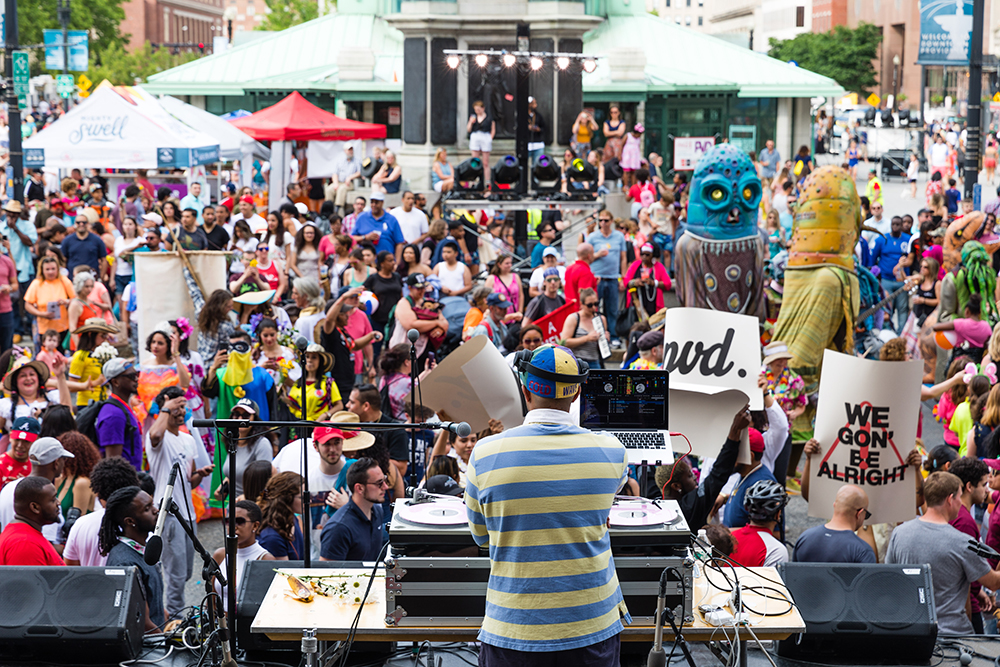
Department of Art, Culture + Tourism
Mission
The City of Providence Department of Art, Culture + Tourism (ACT) ensures the continued development of a vibrant and creative city by integrating arts and culture into community life while showcasing Providence as an international cultural destination.
Vision
ACT envisions a Providence that is a global destination for arts, humanities, and design, where neighbors celebrate diverse cultural and artistic experiences, and where all residents and visitors feel that a relationship to arts practice, making, and culture is a part of their everyday lives
Values
Belonging
An inclusive sense of place makes Providence special. We value intergenerational, participatory, and collaborative work that strengthens intercultural connections. We celebrate new rituals and time-honored traditions that acknowledge our unique historic and present-day contexts. We recognize that identities are complex and value the ways that race, sexuality, gender identity, ability, and class, among other differences, influence the unique perspectives of our communities.
Experimentation
Our work is a nimble, curiosity-driven conversation with artists and creative practitioners who often take risks. We stay flexible as we learn with our thought partners and this helps us grow at our edges.
Transparent Processes
We create scalable, transparent, responsive, and reliable processes that facilitate cultural participation. We strive to communicate clearly, share resources equitably, and act as an accessible entry point to the City.
Anti-Racism
Racism and anti-Blackness are antithetical to our work. We value our team’s diversity, and strive to achieve cultural equity in all we do by amplifying the voices of Black and Indigenous folks, and people of color.
Radical Joy
Love, kindness, empathy, optimism, and acceptance are central to our process. We practice radical joy by elevating work that shamelessly sustains communal pleasure.
Glossary of Terms
The following terms were adapted to represent key concepts in PVDx2031: A Cultural Plan for Culture Shift. This list is not static. At the end are links to our sources for readers to take a deeper dive.
501(c) (3)
A tax status of a mission-driven nonprofit obtained from the federal Internal Revenue Service that allows tax-deductible gifts to the organization and exempts the organization from federal and state income taxes.
Artist
This broad definition includes all individuals who use their imagination and creative process to manifest original work, regardless of the medium, purpose or outcome of that process. Artists are essential to maintaining our cultural practices in our communities and to our economic well-being.
BIPOC
Acronym for Black, Indigenous, people of color.
Business Cooperatives
Entities that encourage collaboration among creative sector professionals to help streamline backend services like accounting, database management and marketing as well as with shared purchases to take advantage of economies of scale.
Changing Climate/Environmental Justice in the Arts
Cultural organizations and artists are in a unique position to challenge, inform and engage audiences in conversations about climate change and environmental justice. They can provoke, inform, and open minds to new ways of thinking. For more information see: Serota, Nicolas, “The Arts Have A Leading Role To Play In Tackling Climate Change.”
Creative/Cultural/Social Capital
The immeasurable value of our creativity, knowledge, interactions and connections, both individually and collectively as human beings.
Creative Economy
An ecosystem with over 670,000 for-profit and nonprofit creative industries, artists, educators, entrepreneurs, vendors, policy makers and funders that produce and distribute cultural goods and services in the United States. It is powered by individuals and organizations that use their creativity to drive job creation and retention, earn revenue, generate community resources and foster cultural engagement. For more information see Americans For The Arts, “Creative Economy.”
Creative Placekeeping
A conceptual counterweight to “Creative Placemaking.” The active care and maintenance of a place and its social fabric by the people who live and work there. For example, creative placekeeping would preserve not only physical buildings but also the cultural memories associated with them, keeping the ideas relevant to a locale alive, while supporting the ability of people living there to maintain their ways of life as they choose. For more information see: U.S. Department of Arts and Culture, “Creative Placemaking, Placekeeping, and Cultural Strategies to Resist Displacement.”
Creative Placemaking
A strategy to address a wide range of community issues or challenges including public health, safety, economic development and housing. This definition is intentionally open and broad because creative placemaking draws on all artistic disciplines; requires partnership across sectors; deeply engages communities; involves artists, designers and culture bearers; and helps to advance local economic, physical and/or social change. While there are ample examples of placemaking activities resulting in positive change, some activities can also support gentrification, racism andreal estate speculation in the name of “neighborhood revitalization.” For more information see: U.S. Department of Arts and Culture, “Creative Placemaking, Placekeeping, and Cultural Strategies to Resist Displacement.”
Creative Sector
All commercial and nonprofit occupations and industries that focus on the production and distribution of cultural goods and services, as well as intellectual property that has a cultural component.
Creative Worker
An individual earning income from creative, cultural or artistic pursuits, either independently or through an employer. Their unique ability to produce ideas, content, goods and services drive the creative economy.
Cultural Ecosystem
This framework acknowledges that all our individual and organizational relationships as artists and culture workers are bound together. To ensure survival, sustainability and growth, we must nurture the entire system.
Cultural Equity
Concept addressing the ways that structural racial discrimination has systemically disadvantaged people based on categories of race, ethnicity, customs, gender identity, sexual orientation, age, religion, disability, socioeconomic status and/or citizenship status. The goal of cultural equity is to work against economic disinvestment and ensure that all people can live in healthy and thriving communities where they feel a sense of belonging.
Cultural Equity Planning
Process that centers the needs of communities and supports them in achieving their visions. For more information see: PolicyLink, “Building a Cultural Equity Plan.”
Cultural Participation
Creating, witnessing, preserving and supporting artistic and cultural expression.
Culture
The sacred beliefs, traditions, arts, languages, social customs and multilayered tangible and intangible knowledge systems manifested by human beings.
Culture Bearers
Individuals who practice intergenerational lifeways and living, evolving cultural art practices that educate, exchange and share in order to preserve ancestral knowledge. Culture bearers hold a direct throughline from ancestors and teachers and center sharing their practice with youth. The role of a culture bearer is particularly important within ancestral cultures undergoing transition or experiencing threat from outside/dominant cultures. Culture bearers accept a responsibility to share ancestral and cultural knowledge. The practice of being a culture bearer is distinct from other individual art practices because the practice is a full life tradition and includes intergenerational transmission of learning. For more information see: Indigenous Roots Cultural Arts Center, “What is a Culture Bearer?”
Frontline Communities
Communities of color most impacted by the crises of ecology, economy and democracy, including the Indigenous, African-American, Black, Latinx, and Southeast Asian communities in Providence. There is particular emphasis on people of color who are refugees and immigrants, people with criminal records, those who speak languages other than English, and people who are LGBTQIA. See: City of Providence 2019 Climate Justice Plan.
Live/Work Housing
A building or complex designed, zoned and otherwise designated to be used for both residences and commercial or light industry. Often refers to space used by artists as studio, office and living accommodations. Zoning codes often do not permit mixing these uses thus they may require special dispensation or changes in zoning.
Living Wage
A wage through which artists can not only survive but thrive in their communities. The exact wage depends upon sustainable economic relationships between artists and the institutions that contract artists’ labor and requires mechanisms for self-regulation. For more information see: Working Artists and the Greater Economy.
Non-Profit
A corporate structure governed by state law in which activities may be driven by social purpose rather than financial gain. Ownership is vested in the entity itself and governed by a volunteer board of directors. Nonprofits are generally, but not necessarily, “tax-exempt” under local, state or federal tax statutes. When federally tax-exempt, they can accept charitable contributions that are tax-deductible for the giver. See also 501(c)(3).
Public Art
Temporary or permanent elements in a public space that are designed by an artist or artist team to reflect an awareness of, and enrich, the site.
Racism
Prejudice + power. A belief that racial differences are inherently superior or inferior. Has led to practices, choices and/or policies that perpetuate systemic disadvantages for BIPOC individuals and communities seeking access to basic resources. For more information see: The People’s Institute for Survival and Beyond.
Sector
A distinct part of a society or nation’s economy.
Spatial Justice
An evaluative framework that enables action to improve our cities and make them more livable and socially sustainable. Spatial justice advocates focus on the spatial dimension of the fair distribution of burdens and benefits of urban development, and on the particular manner in which this distribution is managed through formal institutions, such as planning systems, but also through informal institutions, such as the informal agreements and cultural attitudes towards urban space. For more information see: Spatial Justice Blog, “What’s Spatial Justice?”
Teaching Artist
An artist whose work brings them into schools, libraries and other civic spaces to foster learning.
Selected Sources:
Americans for the Arts, “Creative Economy,” https://www.americansforthearts.org/by-topic/creative-economy
City of Providence, “Creative Providence 2009,” https://www.providenceri.gov/wp-content/uploads/2017/05/City_of_Providence_Cultural_Plan.pdf
City of Providence, “Climate Justice Plan: creating an equitable, low-carbon, and climate resilient future,” https://www.providenceri.gov/sustainability/climate-justice-action-plan-providence/
Indigenous Roots Cultural Arts Center, “What is a Culture Bearer?” https://iroots-mcknight-culturebearers.org/#culture-bearer
PolicyLink, “Building a Cultural Equity Plan,” https://www.policylink.org/our-work/community/arts-culture/plan
Nicolas Serota, “The Arts Have A Leading Role To Play In Tackling Climate Change.” The Guardian 2019, https://www.theguardian.com/commentisfree/2018/nov/20/artsclimate-change
Spatial Justice Blog, “What’s Spatial Justice?” https://spatialjustice.blog
The People’s Institute for Survival and Beyond, https://pisab.org/
U.S. Department of Arts and Culture, Creative Placemaking, Placekeeping, and Cultural Strategies to Resist Displacement, March 8, 2016, https://usdac.us/blogac/2017/12/11/creative-placemaking-placekeeping-and-cultural-strategies-to-resist-displacement
Working Artists and the Greater Economy, http://www.WageForWork.com
Note: Not all urls will remain operable over time
Seven Themes of Our Cultural Plan for Culture Shift
ART AND WELL-BEING
We look to artists, culture bearers and humanists to address, repair and heal past traumas and inequities through their ancestral knowledge and social practice. We recognize that health inequities in our country are deeply embedded and that they redouble the effects of historical traumas. Our policies, investments and support for creative practitioners and their communities focus specifically on the intersections of art, health and the environment.
PLACEKEEPING IN NEIGHBORHOODS
Placekeeping uplifts and supports our unique and diverse neighborhoods. It respects the visions that emplaced communities articulate for themselves and fosters a sense of belonging critical to collective well-being. We are fortunate in Providence to have an abundance of artists, arts organizations, public humanists and creative businesses that are the bedrock of their local, geographic communities. We center their needs.
CREATIVE WORKFORCE
Providence owes its reputation as a Creative Capital to its creative workforce. Who makes up this workforce and how can we contribute to its growth and future? The Bureau of Economic Analysis identifies 5.1 million creative practitioners across the US in this sector. A creative worker is anyone who earns income from cultural or artistic pursuits, either as an independent contractor, solo entrepreneur, gig worker, or through salaried employment. The ideas, goods and services developed by our creative workforce drive our economy. In kind, we must prioritize fair wages, affordable housing and space to create/exhibit while also developing sustainable resources that make this work possible.
CREATIVE ECONOMY
It is estimated that each year the creative economy generates $878 billion or 4.5% of United States GDP. In Providence we rely on revenue generated by the sale of art, culture and designbased goods and services to drive our local creative economy. We understand that barriers to growth and sustainability in the sector must be identified and removed to ensure its vitality and longevity.
RESILIENT NONPROFITS
In 2009 the first cultural plan laid out a goal to “Foster sustainable cultural organizations: nurture agile, healthy, resilient organizations able to anticipate and meet all forms of new challenges.” Providence’s nonprofit arts, cultural, and humanities organizations anchor our local and regional creative sector. They provide spaces for our artists and public historians to develop, exhibit and work; offer educational opportunities and entertainment for all our communities and act as welcoming venues for visiting tourists. The strength and well-being of nonprofits is critical to our economy. No one imagined that the strategies we developed in 2009 would be upended by a global public health crisis in 2020. Curtailed revenue-generating opportunities; increased operating costs; and unpredictable lock downs that dispersed staff and audiences combined to leave our cultural organizations in states of once-unimaginable vulnerability. Our initial pledge to foster sustainable cultural organizations is now more critical than ever as we envision a stronger future, together.
THE FUTURE OF ARTS TEACHING AND LEARNING
In addition to their tangible, material benefits to our communities, there are deeper, more subtle, yet invaluable, reasons to invest in art and culture. Art and culture affirm our shared humanity; help us celebrate our histories and clear mental space for us to imagine beyond the here and now. Art and culture stimulate our curiosity; help us develop critical thinking and problem-solving skills and enable us find common ground across our differences. Art and culture can also help heal those with mental health and physical ailments and address the racial oppression experienced by BIPOC artists and communities. These benefits can be enjoyed by everyone, from the very youngest in our communities, to the eldest. We must commit time, space and funding to support artists, culture bearers and public humanists in our communities to ensure that they are. This work begins when we incorporate art in all curricula and offer fair wages to arts educators.
PUBLIC AWARENESS, ADVOCACY AND TOURISM
Now, more than ever, we must defend and advocate for the importance of our local art and culture sector while finding equitable, profitable, ways to share what we do, and who we are, with visitors. BIPOC communities must be centered in our policies and in the stories we share.
Planning and Facilitation
The cultural planning process was shepherded over two years by practitioners who employed a variety of facilitation tactics. Our collaborative model was built around concentric circles of engagement, which enabled us to engage in a constant and ever-evolving exchange of ideas. These circles helped decentralize the conversations taking place, allowing us to collectively eschew hierarchy and welcome organizations and individuals to participate in myriad ways that suited them best.
Sector Alchemists (2019 – 2020)
Seeded by a grant from the National Endowment for the Arts (NEA) in 2019, our planning process was decentralized from its early stages. ACT laid the groundwork with a brilliant group of artists and representatives of arts organizations that we called the Sector Alchemists. These individuals hailed from Rhode Island Black Storytellers (RIBS), AS220, Providence Youth Arts Collaborative (PYAC), the Providence Cultural Equity Initiative (PCEI), The Steel Yard (TSY), and Grantmakers of Rhode Island. Together we read Emergent Strategy; Shaping Change, Changing Worlds by adrienne marie brown. We felt that a grounding text would provide a framework in which to imagine a planning process that would embody and model intersectional values and cross-sector relationships. Through this lens we asked: How can we use principles of biomimicry as we develop our plan? We cannot answer this question with specificity. Indeed, our exploration is ongoing. What we can say is that through our collective willingness to examine new perspectives we became more open, more fluid, more sincere and more intentional in our thinking.
Surveys (2020-2021)
ACT surveyed community members at in-person events in the fall of 2019. This data was used in our initial conversations with Sector Alchemists to begin designing the planning process.
Virtual Planning Studios (2020)
In the summer of 2020 ACT hired three Artist Facilitators who would be responsible for co-designing and cofacilitating our virtual planning events; supporting our Sector Alchemists across the seven virtual planning studios and helping ACT to identify visions, strategies, recommended activities and measurable outcomes to include in this plan.
In the fall of 2020 we held seven public planning studios, one for each planning theme. Artist Facilitators and Sector Alchemists worked together to craft agendas, invite speakers, coordinate breakout sessions and keep participants energized.
The planning studios were recorded and will remain available on the Department’s blog: https://artculturetourism.com/pvdx2031/
Focus Groups (2020-2021)
Throughout 2020 and 2021 ACT invited individuals and organizations to host independent focus groups. Data from the focus groups was collected using online forms and reviewed by ACT and the Artist Facilitators.
Steering Committee (2021)
ACT and the Sector Alchemists worked together to identify key stakeholders with influence, as well as positional and relational power, in Providence’s creative sector. These stakeholders were invited to meet with ACT and the Artist Facilitators to review and provide feedback on the planning document at three key stages of the process.
Synthesizing the Strategies (2021-2022)
Our strategies evolved through collaboration. We incorporated notes from our planning studios and breakout sessions to develop logic models for each of our seven themes. These enabled us to define our plan’s vision, strategies, recommended activities and measurable outcomes as follows:
VISION:
the imagined future we intend to manifest.
STRATEGY:
the overarching plan and methodology.
RECOMMENDED ACTIVITIES:
proposed action steps that rose from community voice.
MEASURABLE OUTCOMES:
the measurable change we will see as a result of our actions. Below we present the Top 21 Strategies by 2031. We break each theme into three sections: a 2031 Vision that lays out what we imagine for our Creative Capital’s future; a section summarizing What We Heard from participants; and Strategies, Recommended Activities and Measurable Outcomes specific to that theme. The strategies connect across themes and ground PVDx2031: A Cultural Plan for Culture Shift in concentricity.
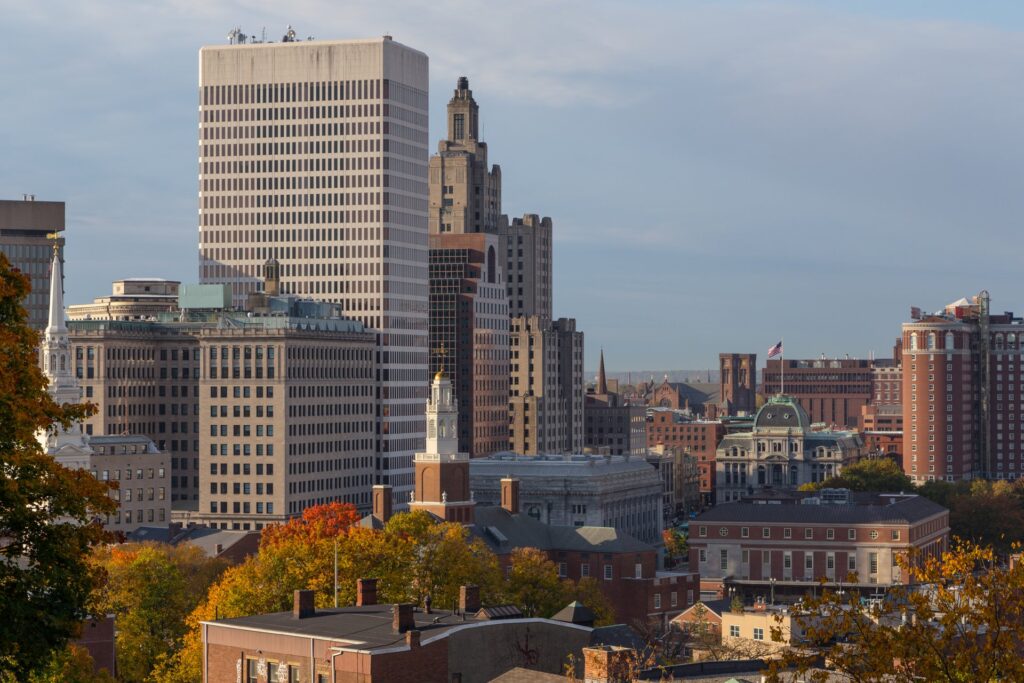
Top 21 Strategies x 2031
Increase support for artists who foster social cohesion and collective healing; create land-based projects and preserve ancestral knowledge.
[STRATEGY 1.2]
Use creative strategies to support well-being in Providence communities impacted most by systemic racism and climate change.
[STRATEGY 1.4]
Fund artist-led design processes that connect art, health and climate resiliency at the grassroots level.
[STRATEGY 1.5]
Support neighborhood-based artists, organizers and businesses who bring relevant art and live events to their neighborhoods.
[STRATEGY 2.1]
Support public projects that advance a spatial justice framework.
[STRATEGY 2.3]
Invest in placekeeping strategies that preserve neighborhood-based cultural expression and strengthen a sense of belonging.
[STRATEGY 2.4]
Address artists’ basic needs.
[STRATEGY 3.1]
Centralize resources for creative practitioners.
[STRATEGY 3.2]
Establish new and fortify existing pathways for young adult artists to explore careers in the creative sector.
[STRATEGY 3.4]
Develop a more equitable and regenerative creative economy.
[STRATEGY 4.1]
Dismantle barriers for arts business and organizations to grow at a sustainable pace and to build resiliency.
[STRATEGY 4.2]
Further develop Providence’s life at night and music economy.
[STRATEGY 4.3]
Develop racial equity goals and accountability structures.
[STRATEGY 5.1]
Develop shared leadership models.
[STRATEGY 5.2]
Develop interdisciplinary programs and collaborative projects.
[STRATEGY 5.4]
Foster culturally responsive school communities.
[STRATEGY 6.1]
Create pathways for BIPOC arts educators and teaching artists to work in established creative businesses, nonprofit cultural organizations and schools.
[STRATEGY 6.3]
Standardize systems for teaching artists working with PPSD.
[STRATEGY 6.4]
Develop marketing strategies that elevate BIPOC residents, artists and cultural offerings.
[STRATEGY 7.1]
Strengthen access and equity through cultural offerings and the commemorative landscape.
[STRATEGY 7.3]
Promote Providence as a world-class cultural destination.
[STRATEGY 7.4]
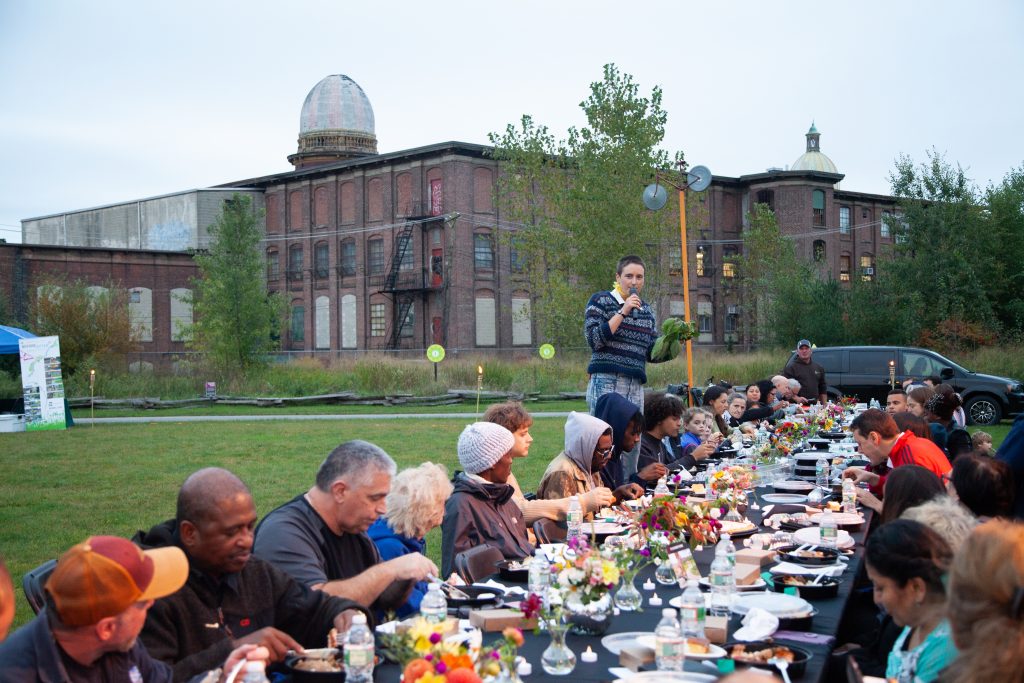
ART AND WELLBEING
2031 Vision
In Providence:
- Artists and culture bearers are valued for their social practice and ancestral knowledge. They are critical in addressing our past inequities and healing our current traumas;
- Our frontline community members and policy makers engage and talk clearly about how the arts, our individual and communal health outcomes, and the environment are connected;
- Public artworks and arts-integrated educational curricula empower our residents to think critically, and find solutions to our most challenging problems;
- We pride ourselves on being a City that engages artists at all tables to center racial equity and environmental justice as imperative to governmental decision making. This includes the development, implementation and evaluation of city-wide programs and initiatives;
- Artists are encouraged to work with impacted communities to be part of organizing, advocating, planning for and implementing public initiatives. This includes those related to health, equity, sustainability and resilience; and
- During the next ten years we will continue to be motivated to learn, heal and create holistic change.
What We Heard
Planning Participants:
- Recognized that our cultural planning process happened against the dystopian backdrop of the COVID-19 pandemic; the revolutionary spark of the Movement for Black Lives; a nearend to our long held democratic elections; and a global desire for proximity, touch and togetherness.
- Emphasized that 2020 was an excruciatingly difficult year that, for many, exacerbated feelings of trauma, loss, and isolation.
- Understood that the underlying dynamics shaping present inequities, and injustices, were not new.
- Showed up ready and willing to do the work, with deeply rooted understandings of a collective past, and a desire to move into a collaboratively reimagined future.
- Acknowledged that experiences with art and culture enhance social cohesion and heal communities.
- Acknowledged that experiencing art and culture helps us prepare for and recover from disasters.
- Reported that they envision a Providence that is healthy, happy, equitable and resilient to climate change.
Strategy 1.1
Integrate the arts in K-12 learning to advance environmental and community health.
[THE FUTURE OF ARTS TEACHING AND LEARNING]
RECOMMENDED ACTIVITIES
- 1.1.A.1. ACT identifies funders, and funds, professional and curricular development for teachers, teaching artists, humanists and culture bearers.
- 1.1.A.2. ACT supports teaching artists to work with K-12 students to address trauma.
- 1.1.A.3. Schools hire teaching artists to offer programs that take place during the school day and that address climate change.
- 1.1.A.4. Schools embed artists within classrooms for their content expertise as strategists at the intersection of art and well-being.
MEASURABLE OUTCOMES
- All PPSD high school graduates are able to apply arts and cultural strategies in real world settings related to health and climate.
Strategy 1.2
Increase support for artists who foster social cohesion and collective healing; create land-based projects and preserve ancestral knowledge.
[CREATIVE WORKFORCE]
RECOMMENDED ACTIVITIES
- 1.2.A.1. Government, funders and nonprofits invest in artists, humanists and culture bearers who center culturally specific ancestral practices and “passed down knowledge” associated with healing.
- 1.2.A.2. ACT supports non-arts community-based organizations that incorporate arts and culture to support community well-being.
- 1.2.A.3. ACT advances site responsive projects by Providence based artists that may take place outside of the City.
- 1.2.A.4. ACT and funders fund trainings and create opportunities for artists to work in community settings and address trauma.
MEASURABLE OUTCOMES
- Indicators of community health improve.
Strategy 1.3
Draw attention to the intersection of art, culture and well-being.
[PLACEKEEPING IN NEIGHBORHOODS]
RECOMMENDED ACTIVITIES
- 1.3.A.1. Funders support art that addresses sea-level rise, climate change and environmental justice.
- 1.3.A.2. ACT, nonprofit arts and culture organizations and other event producers develop and execute concrete accessibility plans.
- 1.3.A.3. ACT convenes artists, organizations and policymakers working in health equity and environmental justice.
MEASURABLE OUTCOMES
- Public policies in health equity and environmental justice reflect the importance of art, culture and creativity.
Strategy 1.4
Use creative strategies to support well-being in Providence communities impacted most by systemic racism and climate change.
[PLACEKEEPING IN NEIGHBORHOODS; PUBLIC AWARENESS, TOURISM AND ADVOCACY]
RECOMMENDED ACTIVITIES
- 1.4.A.1. Government and nonprofit organizations offer programs for artists, humanists and culture bearers to support well-being.
- 1.4.A.2. ACT hires artists, humanists and culture bearers to influence decision-making processes, increase civic participation and promote transparency.
- 1.4.A.3. ACT, the Providence Healthy Communities Office and Providence Office of Sustainability hire artists, humanists and culture bearers to advance well-being.
MEASURABLE OUTCOMES
- Residents in frontline communities are able to fully engage in civic processes and influence policy decisions that support their own well-being.
Strategy 1.5
Fund artist-led design processes that connect art, health and climate resiliency at the grassroots level.
[PLACEKEEPING IN NEIGHBORHOODS]
RECOMMENDED ACTIVITIES
- 1.5.A.1. Nonprofit and community-based health and climate justice advocacy organizations hire local artists to design campaigns.
- 1.5.A.2. Nonprofit and community-based health and climate justice advocacy organizations hire local artists to work within communities to unpack systems that affect their well-being.
- 1.5.A.3. ACT and cultural strategists co-develop best practices that inform funders interested in community wellbeing.
- 1.5.A.4. ACT and nonprofit and community-based health and climate justice advocacy organizations center the role of creativity in organizing around communal well-being.
MEASURABLE OUTCOMES
- Artists and humanists find employment as facilitators connecting creative practice to health, wellness and climate resiliency.
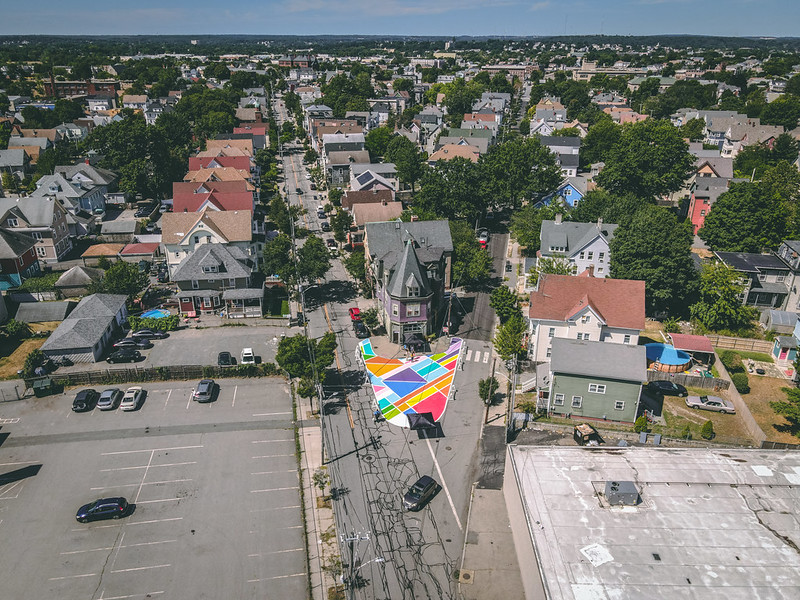
PLACEKEEPING IN NEIGHBORHOODS
2031 VISION
IN PROVIDENCE:
- Communities of all ages, races and physical abilities feel empowered to create, practice and experience art and culture in their neighborhoods;
- All residents, regardless of background and experience, have a say in the future of art, culture and design-based changes that occur in their neighborhoods;
- Artists and community champions are centered together in planning processes and act as trusted stewards of development initiatives;
- We think broadly about how creative places are always connected to privately owned and operated neighborhood third spaces such as: houses of worship, nonprofit cultural centers, restaurants, laundromats, corner stores, salons and fitness centers;
- Artists help make government processes more legible, transparent and accessible;
- We consider the many ways emplaced artists and creative practitioners are integral to networked community spaces, and how support for their work ensures that such spaces remain stable and interconnected in the future;
- Public and private property owners and cultural sector stakeholders collaborate through transparent public processes that create and preserve spaces for BIPOC artists to live, work and create public art without the fear of displacement; and
- We program the built environment and the public realm as a stage, repurposing empty walls, cleared lots, vacant buildings and underused spaces in the civic commons to hold events, gather and lay claim to joy together.
What We Heard
Planning Participants
- Voiced considerable pride in Providence’s neighborhood-based institutions, and lauded spaces in the City that promote a sense of belonging.
- Valued the public realm and wanted to find ways to (continue to) activate front yards, sidewalks, parks, vacant spaces and the civic commons for art and culture.
- Expressed their feelings that the conversation was about sharing public space equitably.
- Foregrounded concerns about gentrification and displacement, as well as language access, disability justice and policing.
- Wanted to experience art everywhere all the time within walking distance of where they live, day and night, and during all four seasons.
- Saw more robust neighborhood-based opportunities for creatives as compatible with justice-oriented work, and as key to accelerating the development of the City’s night time economy and small creative businesses.
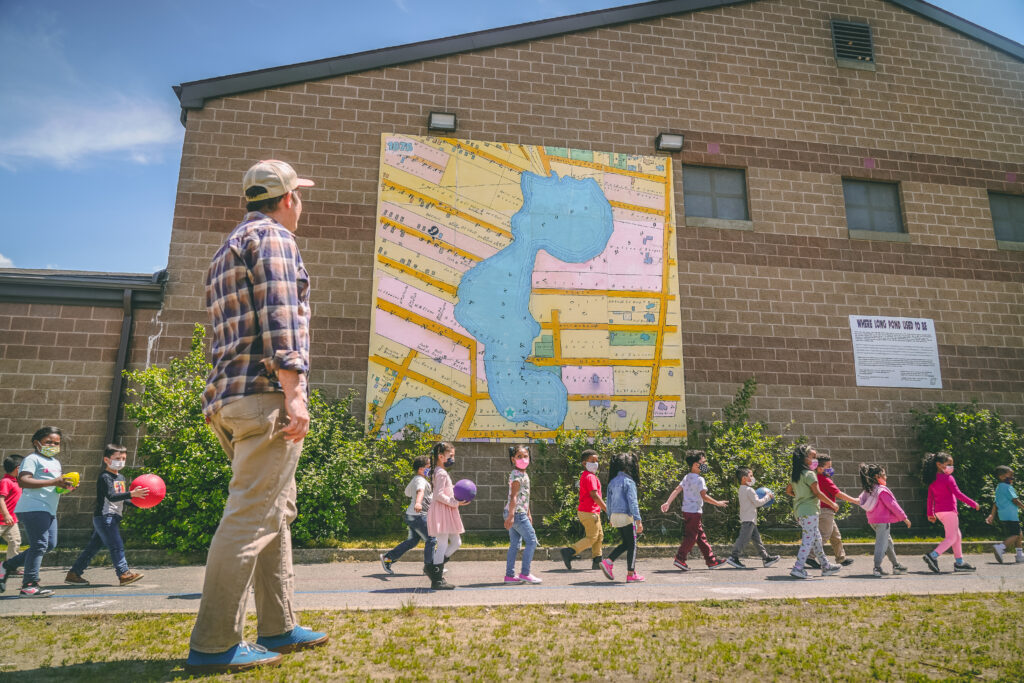
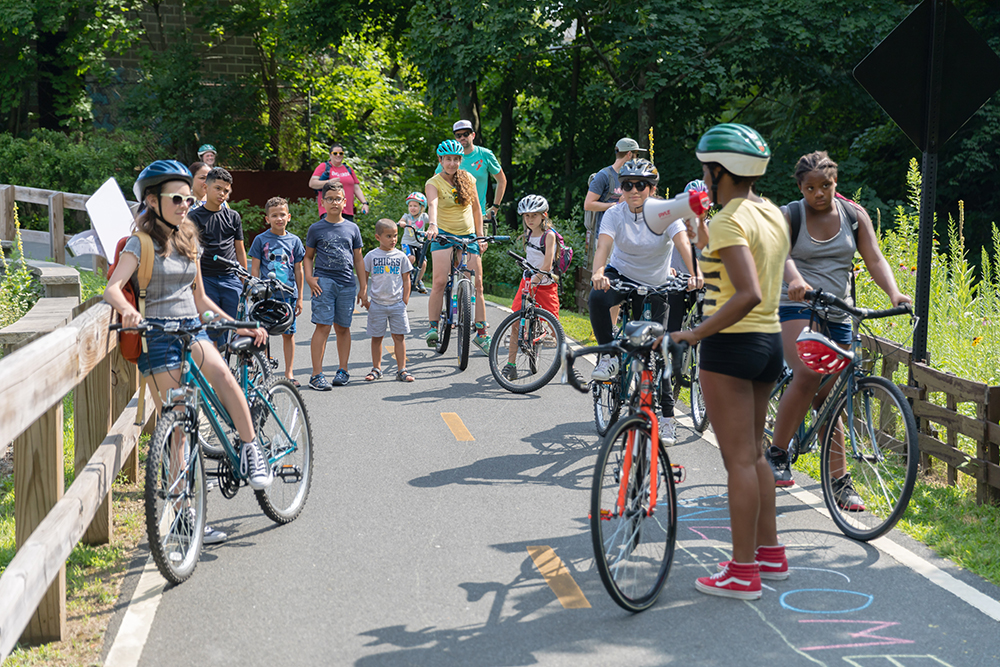
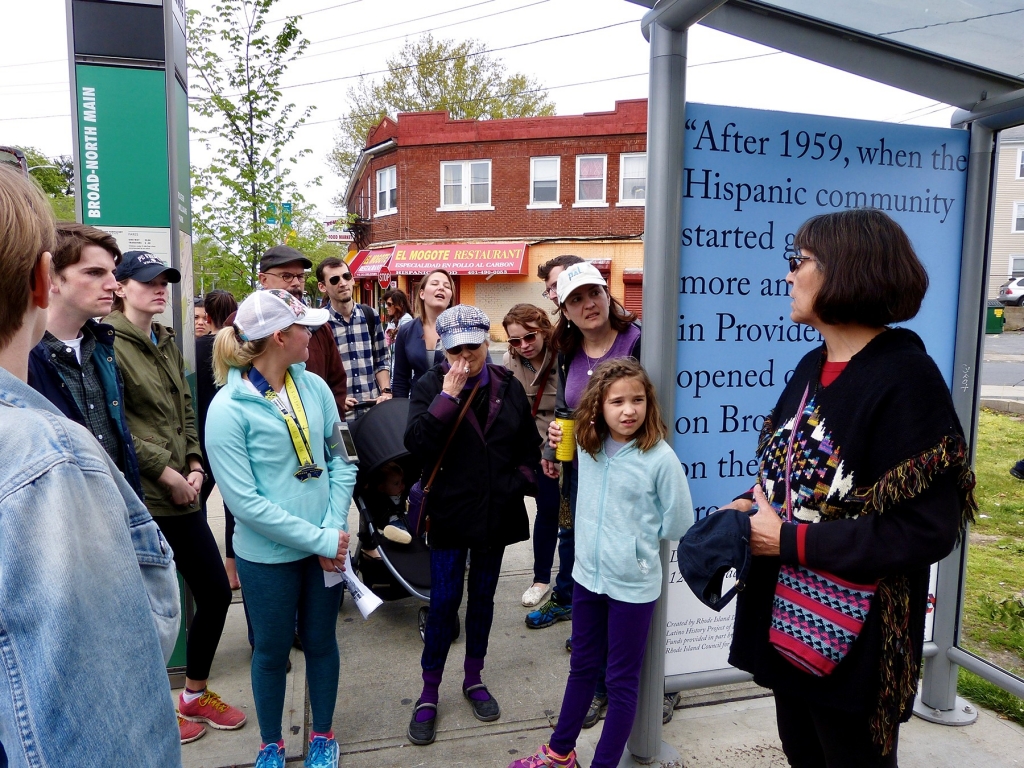
Strategy 2.1
Support neighborhood-based artists, organizers and businesses who bring relevant art and live events to their neighborhoods.
[CREATIVE WORKFORCE; CREATIVE ECONOMY; PUBLIC AWARENESS, ADVOCACY AND TOURISM]
RECOMMENDED ACTIVITIES
- 2.1.A.1. ACT funds projects in neighborhoods outside the downtown.
- 2.1.A.2. ACT translates all its applications into the five most frequently spoken languages in Providence and supports applicants to submit in these five languages.
- 2.1.A.3. Funders disseminate calls for art and grant opportunities in neighborhood-based institutions in languages spoken in those communities.
- 2.1.A.4. ACT creates programs that support small business owners, including but not limited to storefront galleries and restaurants, who work with local artists.
- 2.4.A.5. ACT and funders support workforce and small business training for artists.
- 2.1.A.6. ACT uses the Special Events Ordinance and Art in City Life Ordinance to support professionalization of the creative workforce.
- 2.1.A.7. ACT develops a toolkit for community-based event organizers.
- 2.1.A.8. Funders support neighborhood-scale projects in and around private properties.
- 2.1.A.9. ACT trains neighborhood-based practitioners of conflict mediation and transformative justice within the event organizing sphere.
MEASURABLE OUTCOMES
- City sees increased number of funding and city-service requests for events taking place in neighborhood streets, parks and other civic spaces.
Strategy 2.2
Commission artists to produce events, show work and perform in unexpected sites.
[CREATIVE WORKFORCE; PUBLIC AWARENESS, ADVOCACY AND TOURISM]
RECOMMENDED ACTIVITIES
- 2.2.A.1. ACT and funders commission buskers and other temporary site-specific performances in the public realm.
- 2.2.A.2. Neighborhood associations create seasonal displays of art, or public art projects, on private property throughout the City.
- 2.2.A.3. Nonprofit cultural organizations commission artists to activate underused privatelyowned neighborhood spaces.
- 2.2.A.4. ACT and cross-sector partners advocate for more public art.
- 2.2.A.5. ACT works with the Department of Planning and Development to gain approval from the State to allocate a portion of permitting fees to the Art in City Life Fund.
- 2.2.A.6. ACT works with the Department of Planning and Development to determine best way to implement public art as a development benefit.
MEASURABLE OUTCOMES
- City commissions and permits more neighborhood-based projects.
Strategy 2.3
Support public projects that advance a spatial justice framework.
[PUBLIC AWARENESS, ADVOCACY AND TOURISM]
RECOMMENDED ACTIVITIES
- 2.3.A.1. ACT funds trainings in spatial justice practice for municipal employees, artists and other Providence residents.
- 2.3.A.2. Nonprofit cultural organizations and event producers develop spatial justice analysis for working in the public realm.
- 2.3.A.3. ACT funds projects that reimagine the public realm using a racial and spatial justice lens, and that also foster collective healing while preserving ancestral knowledge.
- 2.3.A.4. Funders support land-based projects and culture bearers to preserve ancestral knowledge.
MEASURABLE OUTCOMES
- City sees increased use of spatial justice terms in grant applications and special event permit requests.
Strategy 2.4
Invest in placekeeping strategies that preserve neighborhood-based cultural expression and strengthen a sense of belonging.
[ART AND WELL-BEING]
RECOMMENDED ACTIVITIES
- 2.4.A.1. Nonprofit cultural organizations who are also land/ property owners develop anti-displacement strategies with cross-sector partners.
- 2.4.A.2. Artists and nonprofit cultural organizations engage in mutual aid to support housing access for Providence’s BIPOC communities.
- 2.4.A.3. ACT and funders support projects that prioritize public art for placekeeping.
- 2.4.A.4. ACT, nonprofit cultural organizations and funders invest in public infrastructure for arts and culture.
- 2.4.A.5. ACT works with City departments to make civic spaces more accessible.
MEASURABLE OUTCOMES
- Local residents participate in increasing numbers in the development/re-development landscape as cultural stewards and place-keepers.

CREATIVE WORKFORCE
2031 VISION
IN PROVIDENCE:
- The community supports a diverse cadre of artists, makers and cultural practitioners such that it flourishes;
- City government and the philanthropic sector provide a safety net for creative workers in times of insecurity and nurture equitable representation within the creative workforce;
- Creatives are integral to strong cross-sector networks and partnerships that center justice, access and racial equity;
- Emerging, mid-career and established artists thrive and their material successes benefit the City’s bottom line;
- The City is known for its strong supportive role in the lives of independent creatives, and plays a customary role nurturing a regional network of emerging artists and cultural practitioners; and
- Cultural practitioners are consistently embedded within diverse businesses and throughout the various departments of local government. This allows non-governmental institutions, municipal government, and independent cultural practitioners to collaborate on large- and small-scale public initiatives that influence daily life.
What We Heard
Planning Participants
- Lamented their burnout. Despite their passionate dedication to their craft and our City, the stresses of living and working under the conditions of the COVID-19 pandemic stretched people to the brink of exhaustion.
- Re-iterated the negative ramifications of the COVID-19 pandemic, specifically calling out the shuttering of creative businesses, venues and events; the loss of survival jobs and the obliteration of income within the entire sector for over a year.
- Stressed that the heartbreaking loss of income compounded and accelerated already existing inequities for independent creatives.
- Expressed that creative sector workers disproportionately lack access to food, housing and healthcare; fair wages for work; space to rehearse, produce and imagine; technology and equipment; as well as education and engaging arts opportunities once they age out of youth arts organizations.
- Regretted that creative sector workers disproportionately suffer from the motherhood penalty and inequitable access to child and elder care.
- Noted that artists who identify as BIPOC, LGBTQIA+, immigrant, disabled, non mono-English speaking, and/or are from frontline communities, are much more likely to experience inequities and negative social determinants of health.
- Understand that the creative sector drives the economy and that it is time to rectify the inequities that advance economic growth to the detriment of individual creatives.
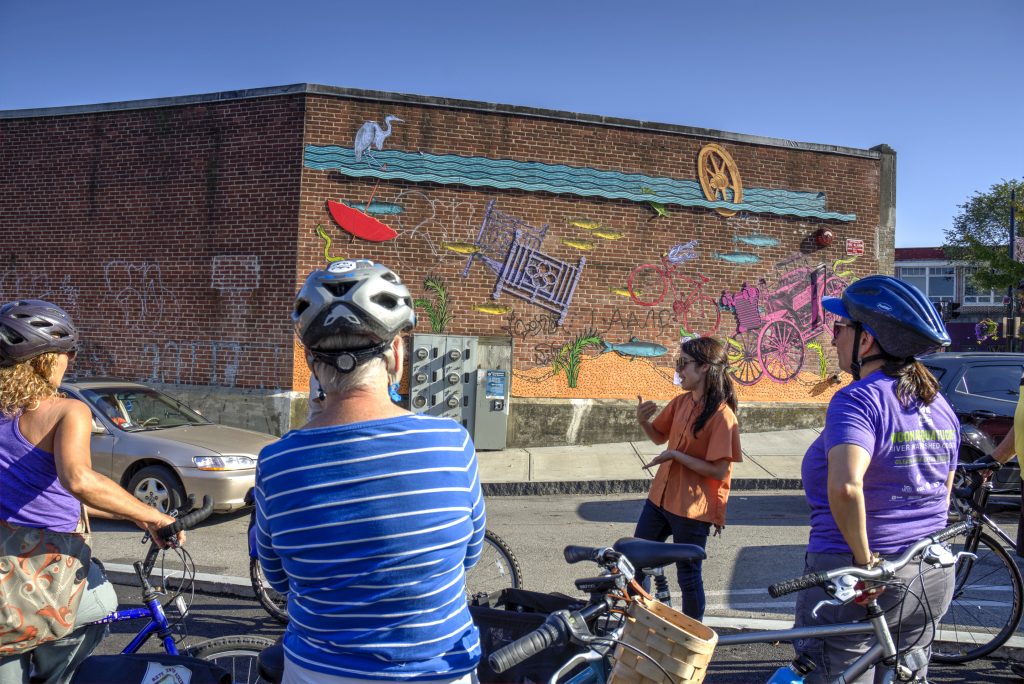
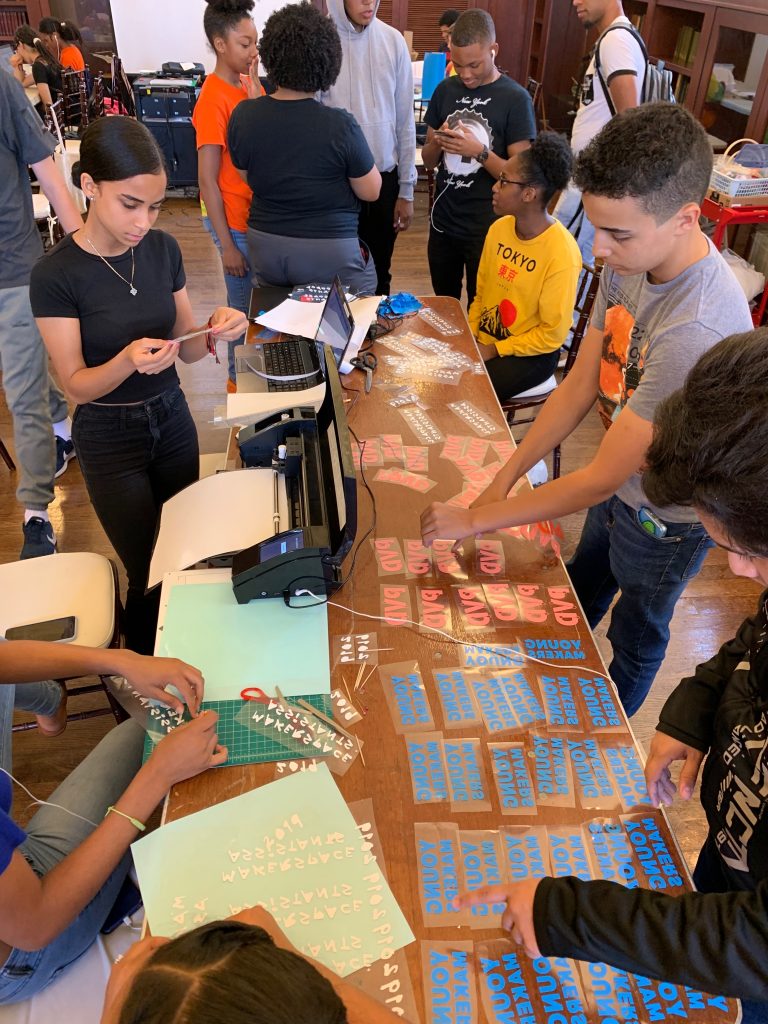
Strategy 3.1
Address artists’ basic needs.
[ART AND WELL-BEING; PUBLIC AWARENESS, TOURISM AND ADVOCACY; CREATIVE ECONOMY]
RECOMMENDED ACTIVITIES
- 3.1.A.1. Independent practitioners create an Artist’s Bill of Rights that recommends fair wages, salaries and benefits and offers frameworks for collective bargaining.
- 3.1.A.2. ACT and funders study the feasibility and long-term economic impact of universal basic income on the creative workforce.
- 3.1.A.3. Funders support independent artists through fellowships, commissions and residencies.
- 3.1.A.4. Funders eliminate obstacles blocking equitable access for BIPOC and LGBTQIA+ artists of all disciplines.
- 3.1.A.5. ACT, The Department of Planning and Development and cross-sector partners generate baseline data related to the creative sector’s housing needs and plan to regularly assess said needs.
- 3.1.A.6. Artists and cross-sector partners advocate for access to fixed, low-interest loans for housing.
- 3.1.A.7. ACT embeds an artist in The Department of Planning and Development to work on the Anti-Displacement and Comprehensive Housing Strategy.
- 3.1.A.8. Nonprofit cultural organizations and creative businesses should make measurable progress towards diversifying their workforces, closing gendered wage gaps and supporting caregivers.
- 3.1.A.9. ACT works with property owners to advance access to temporary creative space for rehearsal, production and showcasing.
- 3.1.A.10. Funders support nonprofit cultural organizations and creative businesses that work towards measurable language justice goals.
MEASURABLE OUTCOMES
- More artists own property, have higher wages, and have greater access to creative work spaces.
Strategy 3.2
Centralize resources for creative practitioners.
[CREATIVE ECONOMY; PUBLIC AWARENESS, ADVOCACY AND TOURISM]
RECOMMENDED ACTIVITIES
- 3.2.A.1. ACT and nonprofit cultural organizations facilitate opportunities for artists to meet, organize and share ideas.
- 3.2.A.2. ACT and funders support a centralized hub for professional development opportunities relevant to the creative workforce.
- 3.2.A.3. ACT and funders support local artists to travel and make work outside of Providence.
- 3.2.A.4. Nonprofit cultural organizations make rehearsal and production spaces accessible to independent practitioners in theatre, film and dance.
MEASURABLE OUTCOMES
- More artists share work and collaborate outside of Providence while remaining rooted in the City.
Strategy 3.3
Support creative entrepreneurs.
[CREATIVE ECONOMY; THE FUTURE OF ARTS TEACHING AND LEARNING]
RECOMMENDED ACTIVITIES
- 3.3.A.1. Business advocates and ACT highlight local creative businesses.
- 3.3.A.2. Nonprofit and governmental workforce development agencies train artists to start creative businesses.
- 3.3.A.3. ACT and nonprofit and governmental workforce development agencies provide technical assistance and offer small business supports and loans to artists.
MEASURABLE OUTCOMES
- More creative businesses incorporate and thrive.
Strategy 3.4
Establish new and fortify existing pathways for young adult artists to explore careers in the creative sector.
[THE FUTURE OF ARTS TEACHING AND LEARNING]
RECOMMENDED ACTIVITIES
- 3.4.A.1. ACT and funders support professional development for 18-24-year-olds in the creative workforce.
- 3.4.A.2. ACT, nonprofit cultural organizations and partners in higher education develop programs for local non-enrolled youth and emerging artists.
- 3.4.A.3. ACT, nonprofit cultural organizations and partners in higher education develop a certificate program in arts administration
MEASURABLE OUTCOMES
- More young artists from Providence stay and work in Providence.
Strategy 3.5
Hire artists and engage creatives in the development of civic projects and public policy.
[PLACEKEEPING IN NEIGHBORHOODS; PUBLIC AWARENESS, TOURISM AND ADVOCACY; ART AND WELL-BEING]
RECOMMENDED ACTIVITIES
- 3.5.A.1. ACT, nonprofit cultural organizations and funders support and develop opportunities for artists working in civic engagement.
- 3.5.A.2. ACT and cross-sector partners track outcomes associated with supporting artists working in civic engagement.
- 3.5.A.3. ACT and governmental workforce development agencies collaborate with for-profit businesses to identify and grow career pathways for artists working in civic engagement.
- 3.5.A.4. ACT and partners in the tourism sector hire artists working in civic engagement to support marketing campaigns and other initiatives.
- 3.5.A.5. ACT and neighborhood business associations develop networking opportunities for artists working in civic engagement.
- 3.5.A.6. ACT and City departments fund shared positions for Artist Facilitators.
MEASURABLE OUTCOMES
- Increased participation and input from the public in planning processes, public hearings and meetings, and voter registration.

CREATIVE ECONOMY
2031 VISION
IN PROVIDENCE:
- Art, culture and design are widely acknowledged to be catalysts of economic well-being;
- The creative sector is understood, supported and encouraged to thrive through municipal- and state-led initiatives;
- We attract and retain a diverse creative workforce by prioritizing BIPOC creatives and businesses;
- The City is known for its excellent cross-sector partnerships and initiatives that promote equity and access; and
- The creative sector is well positioned to influence public culture and space.
What We Heard
Planning Participants
- Emphasized the devastating and disproportionate impact the COVID-19 pandemic has had on our local creative economy.
- Said they have experienced an unprecedented rate of income loss and food and housing insecurity that have exacerbated the harmful impacts of the public health crisis and intensified visibility of racist, state-sanctioned violence.
- Noted that national data shows that BIPOC-led and -serving arts businesses and nonprofits lost income at higher rates than white-led organizations during the COVID-19 shutdowns.
- Described themselves as part of an ecosystem in which creative industries, including independent contractors and nonprofit venues, are vital to everyone’s economic well-being.
- Connected a decline in cultural offerings to a decline in tax revenue from businesses that benefit from them, such as hotels, restaurants and parking lots.
- Vowed to continue offering evidence to support the clear economic impact of the sector in order to secure the resources needed for practitioners to thrive.
- Demanded that bureaucrats and boosters learn from the experiments made possible by the new normal of the pandemic, and refused to go back to an inequitable, unjust and unhealthy state of affairs.
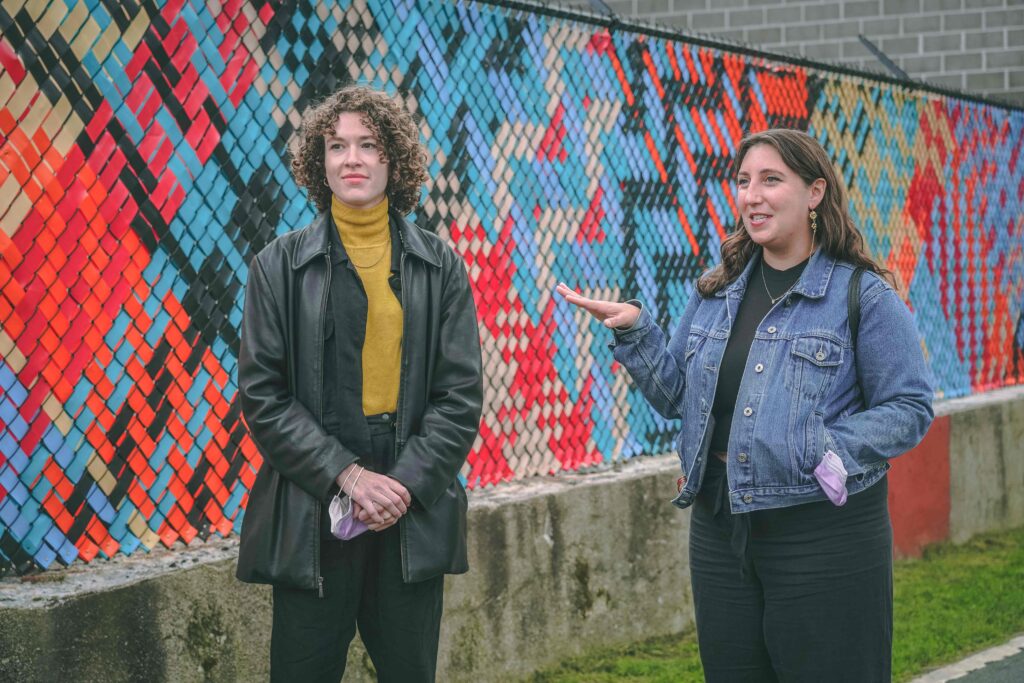
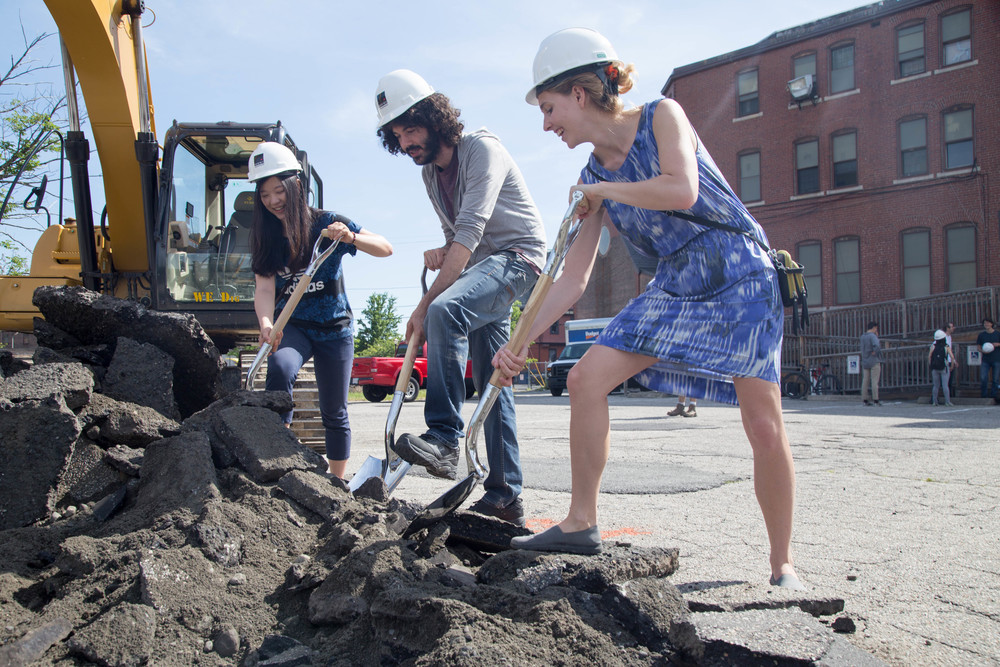
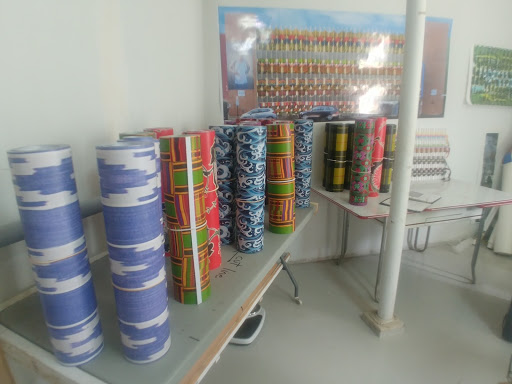
Strategy 4.1
Develop a more equitable and regenerative creative economy.
[CREATIVE WORKFORCE; RESILIENT NONPROFITS]
RECOMMENDED ACTIVITIES
- 4.1.A.1. Creatives advocate for COVID-19 pandemic recovery spending at municipal and state levels.
- 4.1.A.2. Funders adopt practices normalized during the COVID-19 pandemic such as providing general operating support directly to artists, and flexible, nonpredatory loans to arts businesses.
- 4.1.A.3. ACT implements a universal basic income pilot program for Providence-based artists.
- 4.1.A.4. Funders provide direct support to BIPOC-led nonprofits, creative businesses and artists.
- 4.1.A.5. City of Providence provides free Wi-Fi in public spaces.
- 4.1.A.6. City of Providence and nonprofit cultural partners offer trainings in participatory budgeting.
- 4.1.A.7. Funders support partnerships that promote shared work space, resources and services.
- 4.1.A.8. Nonprofit cultural organizations and creatives research and advocate for tax incentives that serve the creative economy.
- 4.1.A.9. ACT regularly reports on the state of the creative economy.
- 4.1.A.10. ACT and municipal and state commerce agencies create assessment tools and encourage creative businesses to participate in studies related to the creative economy.
MEASURABLE OUTCOMES
- Providence has a clear picture of its resilient creative economy.
Strategy 4.2
Dismantle barriers for arts business and organizations to grow at a sustainable pace and to build resiliency.
[CREATIVE WORKFORCE]
RECOMMENDED ACTIVITIES
- 4.2.A.1. Nonprofit cultural organizations prioritize hiring Providence-based independent creators and small businesses.
- 4.2.A.2. ACT and cross-sector partners connect small arts businesses to resources at every stage of development.
- 4.2.A.3. ACT and City partners identify barriers within public procurement, permitting, and licensing.
- 4.2.A.4. Creatives advocate for changes in procurement, permitting and licensing.
MEASURABLE OUTCOMES
- Increased number of contracts, permits and licenses granted to small BIPOC and women-led and -serving organizations and creatives as well as non-monolingual English speakers.
Strategy 4.3
Further develop Providence’s life at night and music economy.
[CREATIVE WORKFORCE; PUBLIC AWARENESS, ADVOCACY AND TOURISM]
RECOMMENDED ACTIVITIES
- 4.3.A.1. ACT and cross-sector partners fund and facilitate a life at night and music economy study to assess, plan and implement strategies that strengthen the City’s downtown and neighborhood cultural corridors.
- 4.3.A.2. ACT and City partners research the feasibility of creating a night Mayor position.
- 4.3.A.3. ACT and RIPTA create an overnight public transportation pilot program.
- 4.3.A.4. Creatives, nonprofit cultural organizations and forprofit businesses advocate for Providence’s life at night and music economy.
MEASURABLE OUTCOMES
- Increased programming and participation in the life at night and music economy.
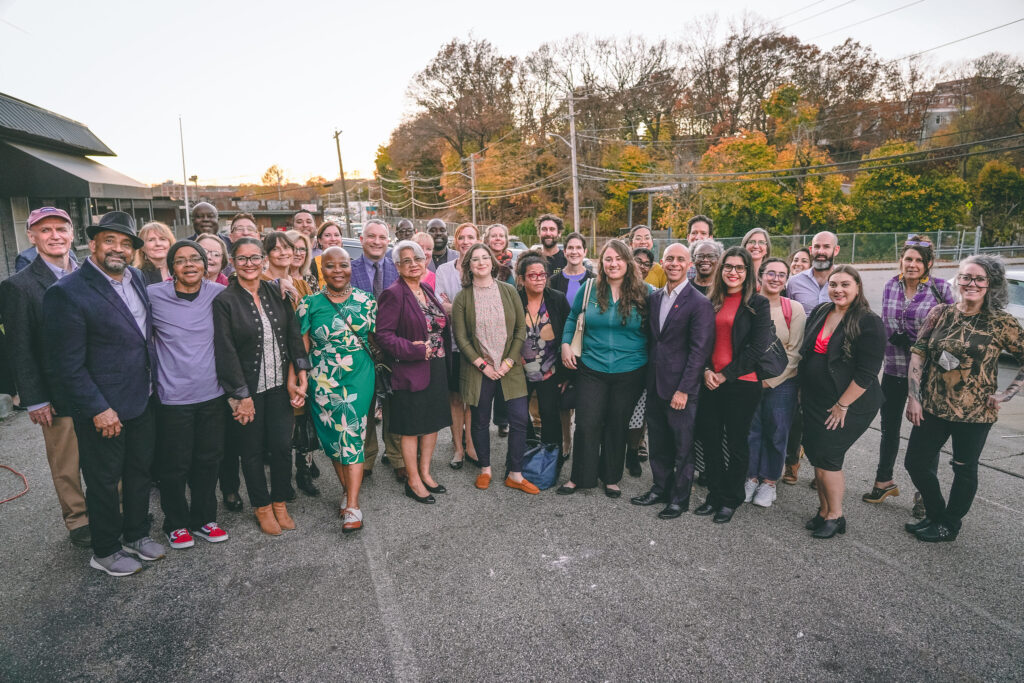
RESILIENT NONPROFITS
2031 VISION
IN PROVIDENCE:
- We are known for our innovative, impactful, racially-diverse nonprofit creative sector;
- Nonprofit creative workers know that they are change-makers;
- Nonprofit creative workers feel supported in their journeys as leaders;
- Nonprofit organizations in the creative sector are built by and with the communities they serve;
- The organizational structures of creative nonprofits accommodate participation by a diverse group of workers at all levels and in all roles;
- The creative nonprofit sector writ large values the ways their workers bring lived experiences and embodied knowledge to their jobs and sees supporting these ways of knowing as central to mission-based work;
- Creative nonprofits are well supported by an innovative and conscientious philanthropic community, including private and public funders that accept and engage in trust-based giving;
- Material and philosophical support for impactful community-oriented projects feels abundant and accessible, making these endeavors feasible for nonprofit organizations, artists and community practitioners; and
- Process is valued as much as product in creative work.
What We Heard
Planning Participants
- Noted how little diversity exists in the higher ranks of Providence’s creative nonprofits, particularly among staff leaders and boards, and called for structural improvements within organizations that operationalize diversity, equity, inclusion and belonging.
- Called for living wages and more flexible career options for creatives working in the nonprofit sector.
- Spoke about the dearth of community-oriented decision making processes in nonprofit organizations.
- Called for new organizational models; funding streams for cooperatives and collaborations that don’t have institutional backing by a 501(c) (3) nonprofit; and philanthropic investment in process rather than product-oriented programs rooted in communal trust.
- Acknowledged the difficulty organizations face in identifying, adopting and funding alternative structures that satisfy the needs of upstream funders.
- Voiced that critical conversations about our cherished institutions are essential to post-pandemic recovery and that the road to recovery can allow stakeholders to rethink and overhaul pre-existing funding mechanisms and organizational structures in order to build more generative and resilient models.
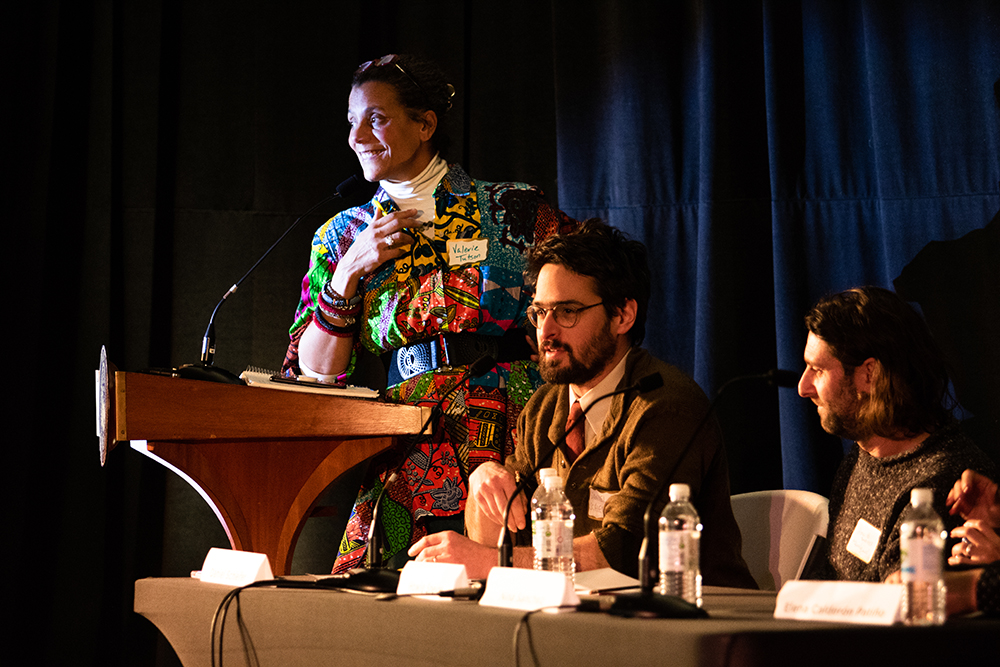
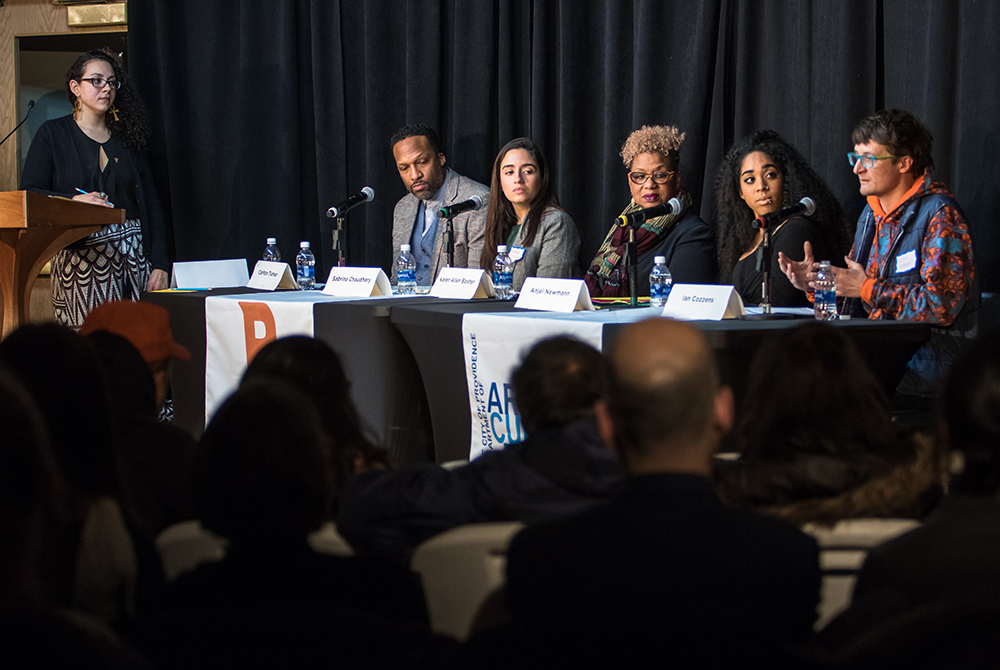
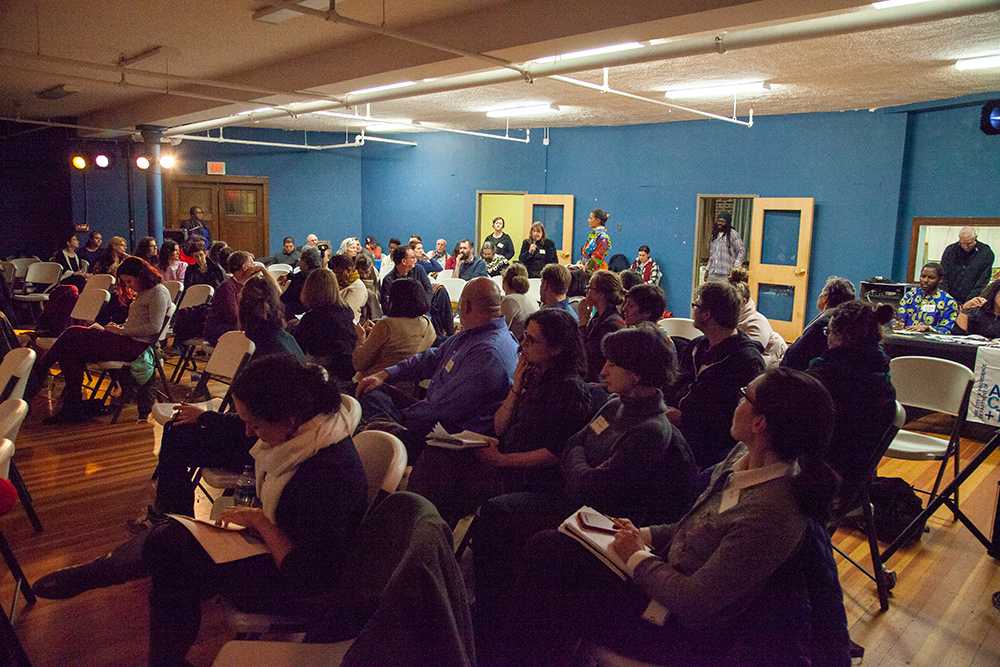
Strategy 5.1
Develop racial equity goals and accountability structures.
[CREATIVE WORKFORCE; ART AND WELL-BEING; PUBLIC AWARENESS, ADVOCACY AND TOURISM]
RECOMMENDED ACTIVITIES
- 5.1.A.1. Funders learn how to implement structural changes that support racial equity from national leaders in philanthropy.
- 5.1.A.2. Funders and nonprofit cultural organizations prioritize racial equity initiatives.
- 5.1.A.3. Funders offer technical assistance, including racial equity and bias trainings, for nonprofit cultural organizations to support them in achieving racial equity goals.
- 5.1.A.4. Funders, nonprofit cultural organizations and audience members create mutual accountability structures to achieve racial equity.
- 5.1.A.5. Funders require nonprofit cultural organizations to create and adhere to racial equity goals.
MEASURABLE OUTCOMES
- Nonprofit cultural organizations have more racially diverse boards, staffs and audiences.
Strategy 5.2
Develop shared leadership models.
[ART AND WELL-BEING; CREATIVE WORKFORCE]
RECOMMENDED ACTIVITIES
- 5.2.A.1. Nonprofit cultural organizations collaborate with community based-organizations (e.g. faith-based, social services etc.) to identify and nurture new talent.
- 5.2.A.2. Nonprofit cultural organizations develop their boards in consultation with paid community advisors.
- 5.2.A.3. Nonprofit cultural organizations explore member-based accountability models that flatten hierarchies of power.
MEASURABLE OUTCOMES
- Increased numbers of nonprofit cultural organizations have more collaborative governance models.
Strategy 5.3
Re-evaluate grant application and reporting processes to center access.
[CREATIVE WORKFORCE]
RECOMMENDED ACTIVITIES
- 5.3.A.1. Funders audit and evaluate their grant applications for embedded racial bias.
- 5.3.A.2. Funders make application and reporting accessible in top five languages other than English spoken in Providence.
- 5.3.A.4. Funders explore and implement trust-based philanthropy.
MEASURABLE OUTCOMES
- Nonprofit cultural organizations and partners offer more responsive and inclusive offerings.
Strategy 5.4
Develop interdisciplinary programs and collaborative projects.
[CREATIVE ECONOMY; PLACEKEEPING IN NEIGHBORHOODS]
RECOMMENDED ACTIVITIES
- 5.4.A.1. Funders increase general operating support.
- 5.4.A.2. Funders and artists measure success by looking at a project’s impact on participant well-being, depth of engagement and quality of collaboration.
- 5.4.A.3. Nonprofit cultural organizations prioritize accessibility.
- 5.4.A.4. Nonprofit cultural organizations serve as fiscal sponsors for independent practitioners.
- 5.4.A.5. Funders support cross-sector projects.
MEASURABLE OUTCOMES
- Nonprofit cultural organizations produce work with greater local, regional and national visibility.

THE FUTURE OF ARTS TEACHING AND LEARNING
2031 VISION
IN PROVIDENCE:
- All K-12 students attending public schools engage with an arts-integrated curriculum that covers all core subjects;
- Schools have state-of-the-art cultural facilities as well as abundant materials and supplies needed for arts learning;
- The creative sector invests in arts education and supports individual artists to work in schools and arts organizations;
- The school district values local creatives and pays fair wages to Providence artists embedded in their schools;
- Arts learners of all ages and backgrounds have access to arts education across all disciplines;
- Artists from preschool-age through their later years can easily develop new skill sets, professional attributes and collaborations facilitated by accessible and affordable space, materials and mentorship opportunities;
- Cross-sector partnerships support viable career trajectories for emerging arts educators, teaching artists and arts administrators of color in schools, afterschool settings and within professional arts organizations and venues; and
- The City prides itself on its students’ use of arts and design-based strategies in their civic participation as advocates for equity, well-being and justice in their communities.
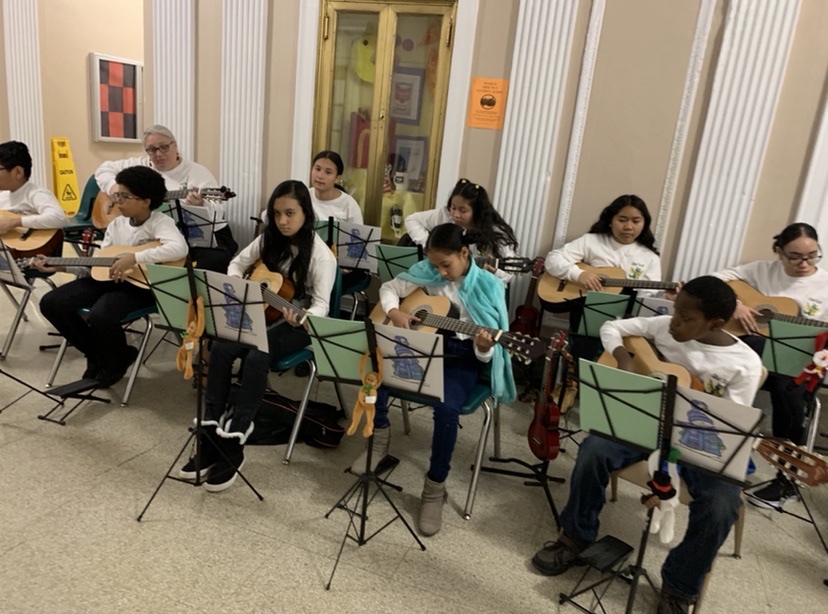
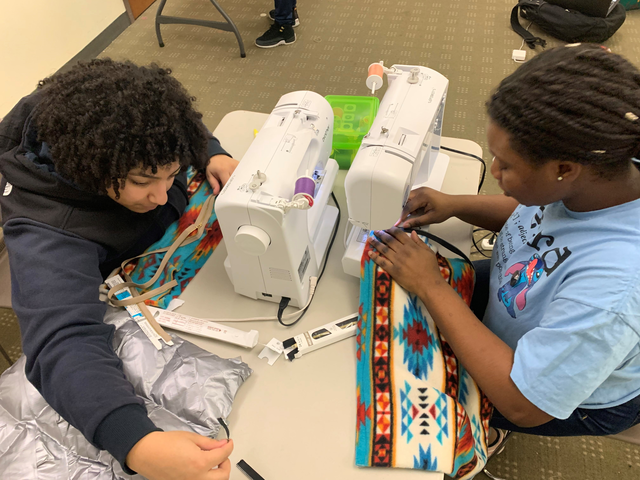
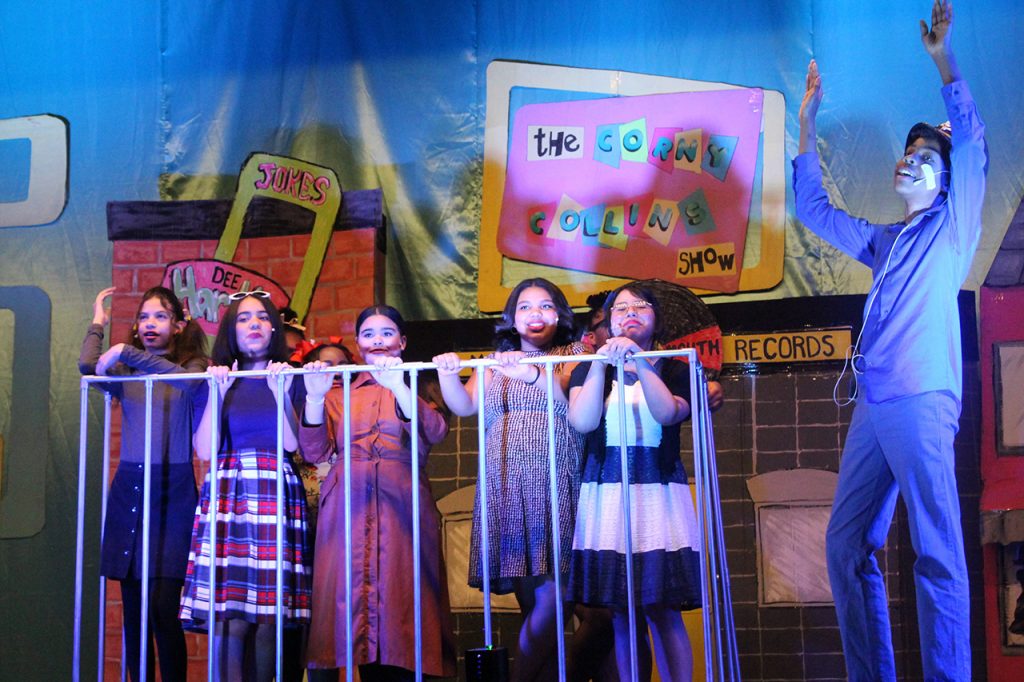
What We Heard
Planning Participants
- Shared their passion for arts education and made an urgent call to strengthen arts offerings in K-12 schools and beyond.
- Understood that Providence is fortunate to have renowned youth arts organizations but recognized a gap in support for youth who age out of their programs, and/or are not then enrolled in a degree-granting programs.
- Noted that there are gaps in arts learning for middle-aged adult learners and elders too, and that there is room to develop opportunities for transient college students to build their careers here.
- Shared a desire to embed artists in schools to complement existing arts education opportunities, and create equitable career pathways for BIPOC practitioners to work directly in schools.
- Craved arts education experiences for all ages and in all places and wanted to learn new forms in the public realm.
- Called for paid apprenticeships; new certification and training programs and tools to facilitate peer critique circles to help ensure that artist educators are well-equipped to be paid fairly for their labor in careers that have potential for growth.
- Spoke to their strong interest in finding creative ways to advocate for the arts as integral to school curriculum; provide training for artists in social practice and utilize the arts as part of civics education, ethnic studies and trauma informed education curricula.
Strategy 6.1
Foster culturally responsive school communities.
[CREATIVE WORKFORCE; PLACEKEEPING IN NEIGHBORHOODS]
RECOMMENDED ACTIVITIES
- 6.1.A.1. ACT supports district administrators to integrate the arts in all K-12 public schools.
- 6.1.A.2. ACT, municipal agencies and cross-sector partners, participate in commissions and review processes related to district-wide school improvement design.
- 6.1.A.3. ACT advocates for districtwide expansion and repair of arts facilities.
- 6.1.A.4. ACT supports school administrators and counselors to offer school-day arts learning for all students.
- 6.1.A.5. ACT and teaching artists integrate arts curricula into civics education ethnic studies and mental health and trauma support programs within schools.
- 6.1.A.6. ACT and school leaders implement artist residency programs, public art installations and cultural events to foster culturally responsive communities with students and families.
- 6.1.A.7. School communities catalyze student interest in creative careers, including but not limited to those relating to fine arts production; event production and management; arts administration and technical design.
- 6.1.A.8. ACT expands the Turnaround Arts: Providence program to include more schools.
- 6.1.A.9. ACT collaborates with RIDE and PPSD to offer professional development opportunities for K-12 educators.
- 6.1.A.10. ACT, funders and cross-sector partners offer free transportation for students participating in cultural programs during out of school time.
MEASURABLE OUTCOMES
- Increased numbers of BIPOC teacher applicants to PPSD; enhanced engagement as indicated by better attendance of teachers, students and families; and increased school-day offerings in all arts and design disciplines across the district.
Strategy 6.2
Develop neighborhood-based, all-ages arts learning opportunities.
[PLACEKEEPING IN NEIGHBORHOODS; CREATIVE WORKFORCE]
RECOMMENDED ACTIVITIES
- 6.2.A.1. ACT and cross-sector partners develop paid arts learning opportunities for all members of the public, whether motivated by career, wellness or community connection.
- 6.2.A.2. Nonprofit cultural organizations, creative businesses and independent practitioners develop paid apprenticeship programs.
- 6.2.A.3. Youth-serving nonprofit cultural organizations offer paid trauma-informed arts learning opportunities.
- 6.2.A.4. ACT and cross-sector partners offer arts learning experiences in public spaces.
- 6.2.A.5. ACT, nonprofit cultural organizations and independent practitioners advocate for the safe use of public schools as arts and cultural venues during out-of-school hours.
MEASURABLE OUTCOMES
- Increased social cohesion as indicated by number of participants taking part in collaborative, neighborhood-based cultural projects.
Strategy 6.3
Create pathways for BIPOC arts educators and teaching artists to work in established creative businesses, nonprofit cultural organizations and schools.
[CREATIVE WORKFORCE]
RECOMMENDED ACTIVITIES
- 6.3.A.1. ACT convenes government agencies, institutions of higher ed. and nonprofit cultural organizations to assess existing resources for BIPOC arts educators and administrators.
- 6.3.A.2. ACT, government agencies and institutions of higher ed. develop practicum-based teaching artist and arts administration certifications for rising high school seniors, college students and independent practitioners.
- 6.3.A.3. Cross-sector partners should identify and reduce barriers towards certifications in arts education and broaden eligible disciplines in which certifications are granted to incorporate training and expertise relevant to the populations of Providence.
- 6.3.A.4. ACT and institutions of higher ed. codify opportunities for PPSD students to attend local colleges and universities, earn arts teaching credentials and return to teach in PPSD.
- 6.3.A.5. ACT collaborates with PPSD and school administrators to develop vocational and technical training in arts and culture fields.
MEASURABLE OUTCOMES
- More BIPOC arts educators, teaching artists and arts administrators are employed in Providence schools and cultural organizations. More PPSD students pursue careers in established creative businesses, nonprofit cultural organizations and schools in Providence and beyond.
Strategy 6.4
Standardize systems for teaching artists working with PPSD.
RECOMMENDED ACTIVITIES
- 6.4.A.1. ACT and PPSD develop equitable and transparent procurement processes and fair wage standards for teaching artists working in schools.
- 6.4.A.2. ACT provides contractual templates to PPSD and trains administrators in best practices.
- 6.4.A.3. ACT and PPSD develop curricula and offer trainings for teaching artists in social practice and artist facilitation.
MEASURABLE OUTCOMES
- Increased numbers of teaching artists work in PPSD.
Strategy 6.5
Create incentives for students and recent graduates to build creative careers in Providence.
[CREATIVE WORKFORCE; CREATIVE ECONOMY]
RECOMMENDED ACTIVITIES
- 6.5.A.1. ACT works with local and state workforce development partners to design incentives for emerging independent practitioners building creative businesses in Providence.
- 6.5.A.2. Independent practitioners develop peer critique infrastructures with support from nonprofit cultural partners.
MEASURABLE OUTCOMES
- Increased numbers of PPSD graduates start creative businesses in Providence.
Strategy 6.6
Support nonprofit cultural organizations that serve BIPOC, immigrant, incarcerated and queer/trans youth.
RECOMMENDED ACTIVITIES
- 6.6.A.1. Funders support nonprofit cultural organizations that dismantle the school to prison pipeline.
- 6.6.A.2. ACT partners with nonprofit cultural organizations that foster youth participation in, and co-design and stewardship of, city-wide planning processes and initiatives.
- 6.6.A.3. ACT and youth-serving nonprofit cultural organizations support other nonprofit cultural organizations and government agencies to include young people on their boards, commissions, grant panels and in other civic processes.
- 6.6.A.4. Nonprofit cultural organizations with humanitiesbased missions collaborate with PPSD administrators to create arts-based K-12 civics education curricula for potential use in schools and afterschool settings.
- 6.6.A.5. Funders support artists of diverse cultural and racial backgrounds to participate in the design of ethnic studies curricula for K-12 schools.
MEASURABLE OUTCOMES
- Increased civic engagement by young people in Providence, as evidenced by their greater participation in elected office; on boards and commissions and in advocacy campaigns.
PUBLIC AWARENESS, ADVOCACY AND TOURISM
2031 VISION
IN PROVIDENCE:
- Diverse cultural happenings, venues, organizations, histories and sacred sites are shared with tourists responsibly as part of an overall strategy to attract new visitors to our City;
- Intentionally crafted marketing campaigns celebrate our racial and cultural diversity;
- Advocacy elevates the City’s diverse cultural assets, including BIPOC-owned businesses;
- Conferences serving diverse audiences are drawn to the City, as are international, national and regional tourists and creative practitioners; and
- Hotels are full and tax revenue generated from tourism helps to promote the creative sector and strengthen its offerings.
What We Heard
Planning Participants
- Noticed the considerable attention being paid to the devastating effects the COVID-19 pandemic on the tourism industry.
- Called out the missed opportunity created by undervaluing Black and Indigenous cultures in the current tourism economy, noting, as examples, their absences across the commemorative landscape, as well as a lack of visibility for BIPOC contemporary artists.
- Spoke to the loss felt as a result of not having a Black cultural hub in the City’s center.
- Demanded to see a wider celebration of Providence’s diverse cultural amenities, programs and culinary delights beyond its majority white areas.
- Voiced a desire to see stronger and more genuine partnerships between the local tourism industry and BIPOC cultural scene built around opportunities for artists, organizations and small businesses.
- Proposed a shift in the dominant narrative of what Providence is, offers and looks like.
- Suggested that to successfully implement this shift, we will need to center local, BIPOC cultural practitioners’ needs.
- Proposed that more comprehensive wayfinding and marketing would help cement the City as a world-class cultural destination.
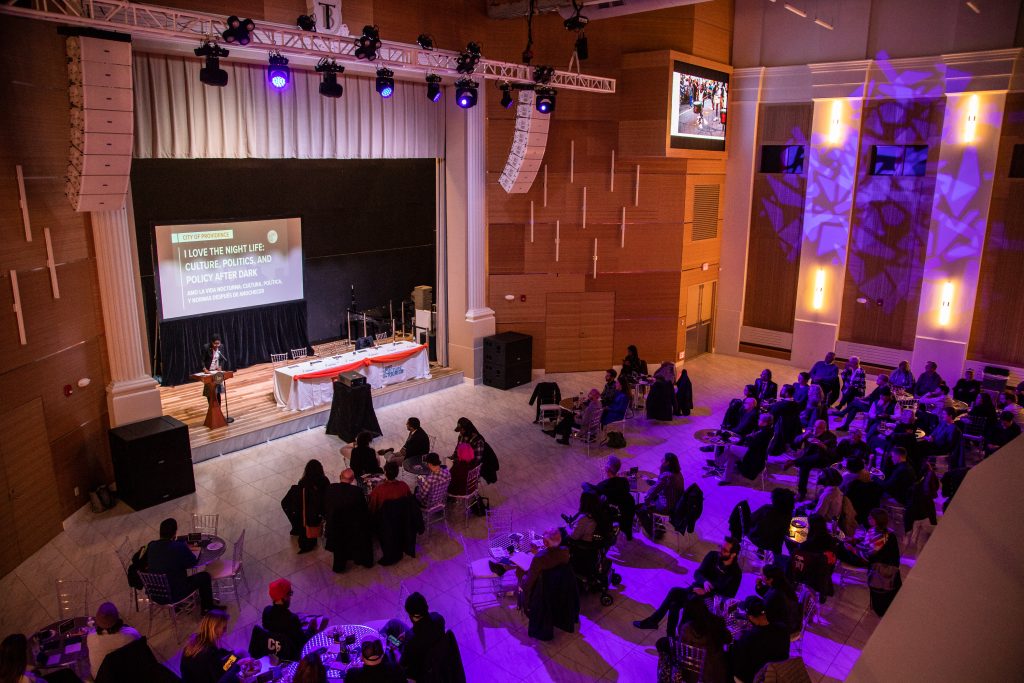
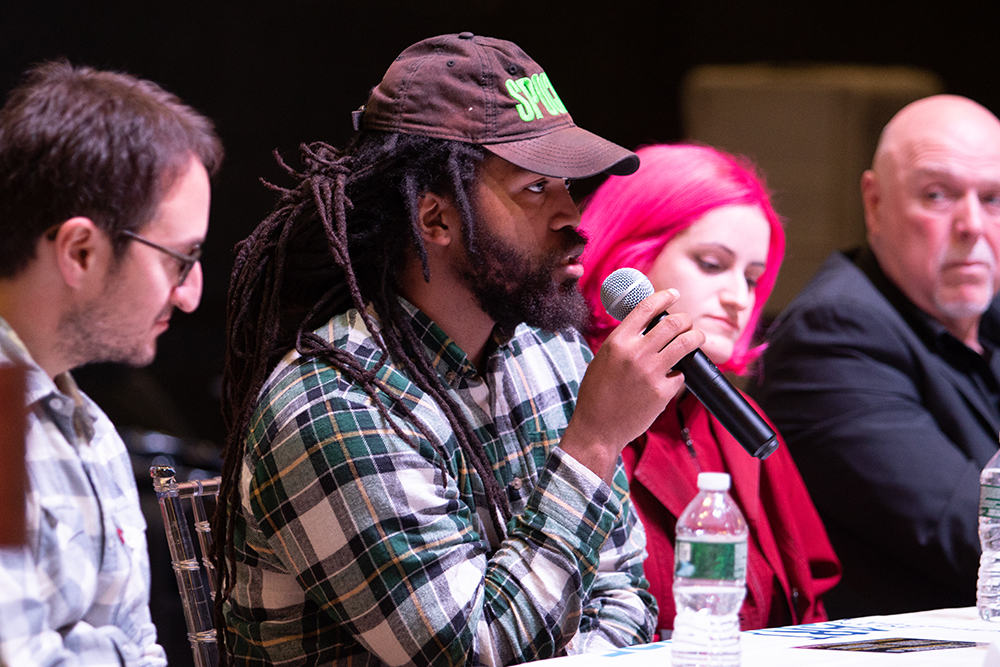
Strategy 7.1
Develop marketing strategies that elevate BIPOC residents, artists and cultural offerings.
[RESILIENT NONPROFITS; CREATIVE WORKFORCE; CREATIVE ECONOMY]
RECOMMENDED ACTIVITIES
- 7.1.A.1. Providence/Warwick Convention and Visitor’s Bureau targets national and regional conferences that center BIPOC voice and experience.
- 7.1.A.2. Funders support nonprofit cultural organizations to program culturally responsive seasons, and develop inclusive marketing materials.
- 7.1.A.3. The City and its hospitality and tourism partners develop and promote weekend getaways and other vacation packages around BIPOC cultural events.
- 7.1.A.4. The City and its hospitality and tourism partners hire local BIPOC creatives and influencers to develop content attractive to BIPOC visitors.
- 7.1.A.5. The City’s tourism and hospitality partners hire more local BIPOC residents.
- 7.1.A.6. The City’s tourism and hospitality partners elevate the narrative that Providence is a place where art is made by BIPOC creatives.
- 7.1.A.7. The City and its tourism partners further develop neighborhood-based visitor information services, walking tours and tourism products and promote them to culturally specific audiences.
- 7.1.A.8. The City collaborates with cross-sector partners to develop cultural infrastructure investments, such as the wayfinding and branding of the urban trail network.
MEASURABLE OUTCOMES
- Increased numbers of BIPOC overnight visitors to the City.
Strategy 7.2
Promote the work of independent practitioners, nonprofit cultural organizations and creative businesses.
[CREATIVE ECONOMY; CREATIVE WORKFORCE]
RECOMMENDED ACTIVITIES
- 7.2.A.1. ACT continues to participate in the Americans for the: Arts & Economic Prosperity Studies, promotes the economic impact calculator and reports aggregate findings.
- 7.2.A.2. Government agencies develop clearer policies and more robust financing incentives for creative businesses and nonprofit cultural organizations looking to establish themselves in Providence.
- 7.2.A.3. Funders who disburse tourism tax dollars audit grantmaking to date to ensure that future awards provide equitable support to BIPOC independent practitioners, nonprofit cultural organizations and creative businesses.
- 7.2.A.4. ACT continues to collaborate with regional and national partners to deepen research on the creative economy and co-create programs.
- 7.2.A.5. ACT funds professional development opportunities for local nonprofit cultural organizations and independent practitioners to send staff to, or attend, regional and national conferences.
- 7.2.A.6. Nonprofit cultural organizations and creative businesses fund residency opportunities for visiting artists.
- 7.2.A.7. ACT and municipal partners develop promotional materials to educate business and property owners about ways they can work with independent practitioners, nonprofit cultural organizations and creative businesses.
MEASURABLE OUTCOMES
- State and local legislators and commerce agencies advocate for the social and economic impact of the creative sector.
Strategy 7.3
Strengthen access and equity through cultural offerings and the commemorative landscape.
[ART AND WELL-BEING; RESILIENT NONPROFITS]
RECOMMENDED ACTIVITIES
- 7.3.A.1. Funders support antiracism, language justice, disability justice and LGBTQIA+ inclusivity trainings for nonprofit cultural organizations.
- 7.3.A.2. Nonprofit cultural organizations offer more multilingual programs.
- 7.3.A.3. ACT creates public-facing documents, announcements, and design materials in the five most spoken languages in Providence and Algonquin.
- 7.3.A.4. ACT enhances the accessibility of all its programs in collaboration with disabled designers.
- 7.3.A.5. ACT facilitates the ongoing consideration and evaluation of existing commemorative works as well as the proposal of new commemorative works that uplift BIPOC histories.
- 7.3.A.6. ACT and municipal partners collaborate with Native American independent practitioners, nonprofit cultural organizations and tribal government leaders to identify and develop programs that promote public awareness of sacred historic sites.
- 7.3.A.7. Funders create and promote support mechanisms specifically for Black independent practitioners, nonprofit cultural organizations and creative businesses.
- 7.3.A.8. Nonprofit cultural organizations foster accessibility for local and non-local audiences with hybrid in-person and online programming.
- 7.3.A.9. Tourism and hospitality partners train their boards and staffs in antiracist principles and develop clear and transparent diversity, equity and inclusion practices.
MEASURABLE OUTCOMES
- Providence is celebrated for its wealth of diversity as evidenced in regional and national tourism marketing; an increase in attendance at BIPOC-centered cultural offerings and increased numbers of ADA accessible and non-monolingual English programs.
Strategy 7.4
Promote Providence as a world-class cultural destination
[CREATIVE ECONOMY; ART AND WELL-BEING; PLACEKEEPING IN NEIGHBORHOODS]
RECOMMENDED ACTIVITIES
- 7.4.A.1. ACT, independent practitioners, nonprofit cultural organizations and creative businesses produce live events in the public realm such as festivals, concerts and art markets.
- 7.4.A.2. ACT commissions and implements a study of life at night in order to identify and develop new operations in support of the City’s nightlife, entertainment industry and culinary scene.
- 7.4.A.3. ACT and municipal partners create and implement a plan to increase lighting across the City, especially in areas adjacent to cultural corridors.
- 7.4.A.4. ACT and municipal partners support venues and cultural facilities to enhance ADA accessibility.
- 7.4.A.5. ACT and municipal partners develop a special events division to oversee and steward the use of public space by independent practitioners, nonprofit cultural organizations and creative businesses.
- 7.4.A.6. ACT funds trainings in anti-racism/anti-bias, conflict resolution and other measures for event producers.
- 7.4.A.7. ACT and cross-sector partners develop and market new strategies to attract people to outdoor public events during winter months.
- 7.4.A.8. ACT and nonprofit cultural partners commission light-based public art during winter months.
- 7.4.A.9. ACT and municipal partners promote the City’s walkability and multimodal accessibility along cultural corridors via the urban trail network, downtown unified vision plan, Roger Williams Park Gateway and other public space planning efforts.
- 7.4.A.11. ACT and cross-sector partners develop strategic global partnerships through sister city relationships and peer-to-peer networks.
MEASURABLE OUTCOMES
- Increased public safety as evidenced by decreased reliance on police; enhanced life at night as measured by increased attendance at night-time programming; enhanced lighting; better ADA accessibility; more robust multi-modal transportation along all cultural corridors and increased numbers of public events taking place in all neighborhoods of the City.
Conclusion: We’re in it.
GINA RODRÍGUEZ-DRIX IN DIALOGUE WITH MICAH SALKIND
Micah: Sometimes you don’t know where you are going until you’re already on your way. It wasn’t until we came back to edit this plan that we saw many of the finer details and exciting prospects become obvious.
Gina: Well, I knew they were there. This was just so deeply collaborative, that we had to find a way to make the many voices into one – especially given that this is a policy document that will live with the City beyond our time here.
Micah: Yes, it will not only be a record of our time in this department, but also a record of all our relationships with collaborators and constituents.
Gina: It’s also a marker of how time is moving these days; doing the planning process in 2020 and the feelings and articulations that emerged in that time/space have already been shifting. It’s wild to think about references to COVID-19 feeling dated. The momentum and the tide do feel different. As we are doing the final edits in 2022, and noticing things that we’ve already begun to implement, it can feel like we’re both out in front of the work and chasing behind it at the same time. We’re just in it.
Micah: Who do we need to call back to one last time – to invoke and celebrate, to share the joy of completion and the excitement of the move to implementation? There are so many people who touched and changed this document!
Gina: All the Sector Alchemists and Artist Facilitation team, Renée Neely, and studio participants and guest speakers. None of this would have happened were it not for the deeply collaborative container that we made in prepping for those studios; the support that we gave to one another and the match-making we did with sector alchemists. The funders! City Council, RISCA, the NEA – we couldn’t have done it without these critical supporters. Typically cultural plans are written by consultants who don’t necessarily live in or feel personally accountable to a place. We tried that route and ended up doing it this way. Keeping it in house meant it took a little longer because we didn’t have one person to hold it 100% of the time.
Micah: The document’s validity and strength are grounded in that accountability and process.
Gina: We had to start implementing some of the things in the plan while we were still finalizing the plan. It was actually incredibly helpful to have a public draft to refer back to. It has influenced how we’ve allocated our American Rescue Plan resources.
Micah: We had a director shift and welcomed new family into our lives during this process, which is not inconsequential to how we think about it, or to how it has taken shape. We couldn’t have done this without the leadership of Mayor Elorza, nor without Stephanie Fortunato and Lizzie Araujo, our amazing Directors. In terms or wrapping things up, what is your last word on the cultural plan as the person who has held it most tightly through the past several years?
Gina: This process took place during a torch passing, and its publication is taking place during one as well. We have to be accountable to each other for this to work. The process and the people are the point. Always.
Closing Statement
There is a reason why cultural plans are catalyzed by the public sector. As arts administrators who work for cities, we are tasked with stewarding public dollars to make collective meaning. Across the country and at local, regional and national levels, most of the creative work that falls outside of the hegemonic culture is funded by the public. And yet, the work of supporting the making of meaning is limited by the constraints of power and governance. There is no easy way around the conflicts of intent and the labor of operationalizing racial equity. Cities are the machines that plan for land use of occupied territory, and the machine shows up in our work every day. We could catalyze a cultural planning process, but only in partnership with those working outside of city government. To do so required trust in our ability to align with our city’s creatives for the long haul.
When ACT started the planning process in 2019, we highlighted Art and Well-being to honor the conversations artists, culture bearers and humanists have had for time immemorial: those pertaining to the intangible and invaluable work the arts do to support our collective memory, collective conscious and collective health. The COVID-19 pandemic lockdowns, civil uprisings in response to state-sanctioned murder, intensifying climate crises and visceral threats to our democracy were the underpainting of the planning process. But our resiliency is the paint. I hope that resiliency is as palatable to you as it is to me when reading this plan.
When we published the draft in July 2021 our office was thrust into finding ways to equitably move the American Rescue Plan dollars forward to our creative sector. We began to implement some of the PVDx2031 recommended activities before the final product reached your hands. Over the last year our office has worked towards supporting teaching artists in new ways; funded Providence’s creative nonprofits to rebound and rebuild; laid the groundwork for making changes in the commemorative landscape and the built environment and has begun working towards implementing studies to support our gig workers and the City’s life at night. We have already awarded $5 million in COVID-19 relief dollars to our local creative sector.
Now that the final copy is in your hands, we hope that the sector continues to interrogate this plan as a moral document. We welcome you to critique, to reinterpret and to challenge it as a living blueprint for our collective future. We welcome you to build the parts we forgot and to release what no longer fits. The possibility of PVDx2031: A Cultural Plan for Culture Shift lies in our continued collaboration, interconnectivity and alignment. We need all of us to move these strategies forward. Let’s continue to dismantle the harm and build the good. And trust we all have a role to play.
Pa’lante,
Gina Rodríguez-Drix
Deputy Director, Department of Art, Culture + Tourism
Acknowledgements
PROJECT DIRECTOR
Gina Rodríguez-Drix, Deputy Director, City of Providence Department of Art, Culture + Tourism
CITY OF PROVIDENCE DEPARTMENT OF ART, CULTURE + TOURISM STAFF
Lizzie Araujo, Director
Gina Rodríguez-Drix, Deputy Director
Dr. Micah Salkind, Special Projects Manager
Lael Tucker, Director, Turnaround Arts: Providence
Allison Barry, Cultural Affairs Manager
Charlotte Abotsi, Production Coordinator
Andy Goodman, ARPA Grants Coordinator
Ellary Gamache, ACT Coordinator
CULTURAL PLAN INTERNS
Africia Ben
Lola Rael
Michelle McCue
SPECIAL APPRECIATION
Stephanie Fortunato, ACT Director 2016-2022
ARTIST FACILITATORS
Tracy Jonsson-Laboy
Shey ‘Rí Acu’ Rivera Ríos
MJ Robinson
STUDIO PARTICIPANTS
Thank you to the more than 300 people who participated in our virtual studios.
FOCUS GROUP HOSTS
112 people participated in focus groups hosted
by the following individuals:
Holly Ewald
Stephanie P. Fortunato
Ashley Frith
Stephanie Hague
Dorothy Jungels
Chloe Kline
Francis Parra
PechaKucha Providence
Brent Runyon
Rick Scianablo
Aarav Sundaresh
Susie Schutt
SECTOR ALCHEMISTS
Taylor Jackson (PYAC / Executive Director, Providence CityArts for Youth)
Dorothy Jungles (PYAC / Artistic Executive Director, Everett)
Adrienne Gagnon (PYAC / Executive Director, DownCity Design)
Don King (Chief Creative Officer, Providence Cultural Equity Initiative)
Denise Meza Reidpath (PYAC / Co-Executive Director, RIOT RI)
Anjel Newman (Co-Executive Director, AS220)
Sebastian Ruth (PYAC / Founder & Artistic Director / Resident Musician, Community MusicWorks)
Dr. Micah Salkind (Special Projects Manager, The City of Providence Department of Art, Culture + Tourism)
Daniel Schleifer (PYAC / Executive Director, New Urban Arts)
Howie Sneider (Executive Director, The Steel Yard)
Meg Sullivan (PYAC / Co-Director, The Manton Avenue Project)
Islay Taylor (Associate Director, The Steel Yard)
Valerie Tutson (Co-Founder and Director, Rhode Island Black Storytellers)
Raymond Two-Hawks Watson (Founder/CEO, Providence Cultural Equity Initiative)
Nancy Wolanski (Executive Director, Grantmakers Council of Rhode Island)
POLICY ARCHITECT
Tracy Jonsson-Laboy
EDITORS
Renée Elizabeth Neely, MLIS
Dr. Micah Salkind, Special Projects Manager, Department of Art, Culture + Tourism
STEERING COMMITTEE
Kristen Adamo
Claire Andrade-Watkins
Ting Barnard
Yvonne Beauregard
Christina Bevilacqua
Laura Briggs
April Brown
Marilyn Cepeda
Janine Chartier
Sabrina Chaudhary
Bethany Costello
Michelle Cruz
Rodney Davis
Deb Dormody
Elizabeth Francis
Sabina Griffin
Daryl Black Eagle Jamieson
Xander Marro
Tony Mendez
Sage Morgan-Hubbard
Silaphone Nhongvongsouthy
Francis Parra
Jenny Pereira
Glynis Ramos Mitchell
Sokeo Ros
Randall Rosenbaum
Jordan Seaberry
Soni Stokes
Spocka Summa
Carrie Taylor
J’Juan Wilson
REPORT DESIGN
mediumstudio
THE PVDX2031: A CULTURAL PLAN FOR CULTURE SHIFT WAS FUNDED BY THE CITY OF PROVIDENCE, RHODE ISLAND STATE COUNCIL ON THE ARTS, AND THE NATIONAL ENDOWMENT FOR THE ARTS.

